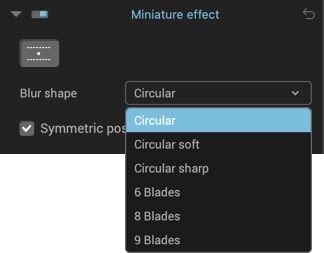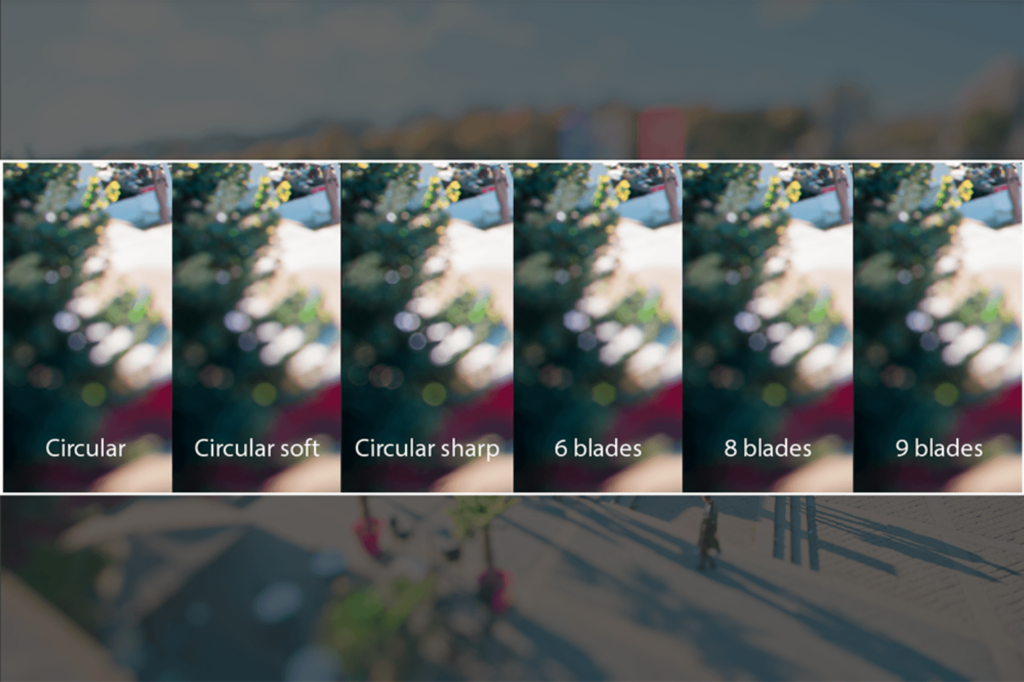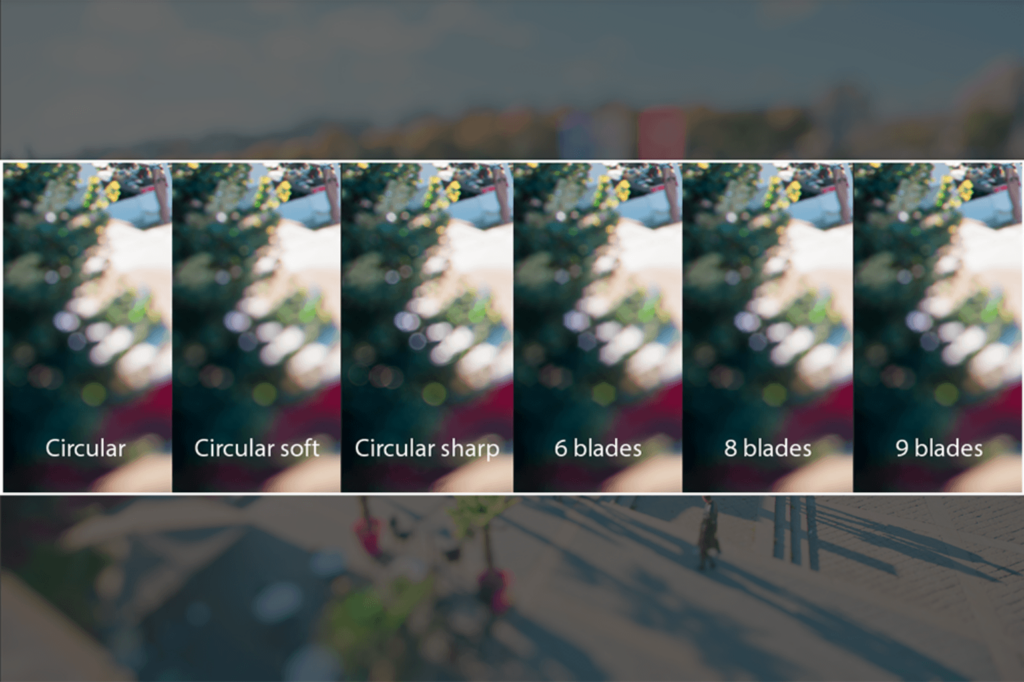Nik 6 Perspective lets you correct lens distortion and distorted elements in your photos, straighten geometry, perform localized deformations, and apply miniature effects.
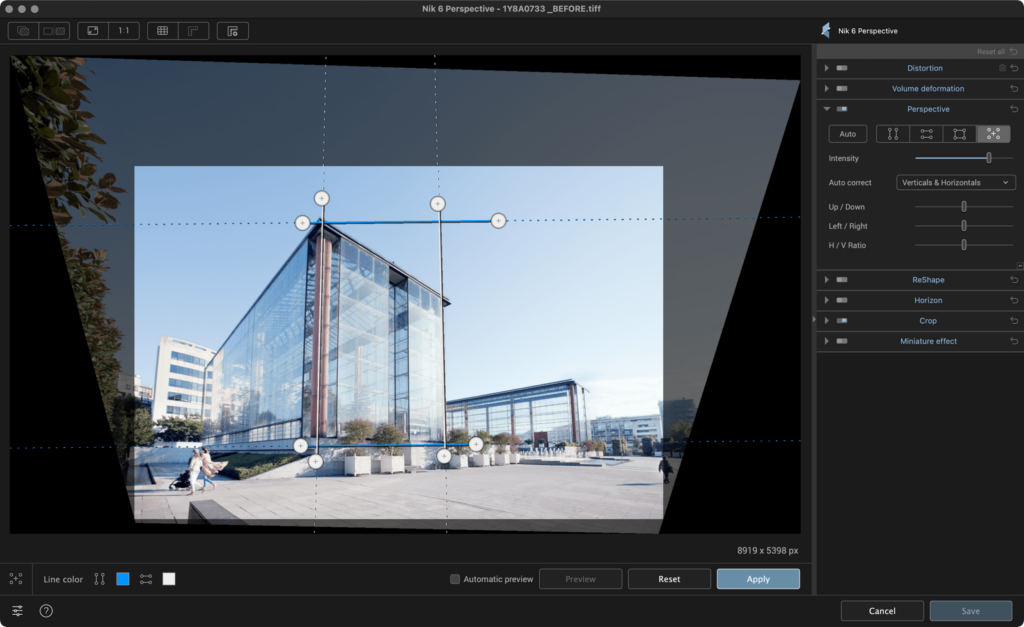
Nik Perspective is based on DxO ViewPoint, from which it takes all of the tools, and also allows you to take advantage of the efficiency of DxO Optics Modules to correct vignetting, distortion, and chromatic aberration.
Nik Perspective Settings & Help
The Nik Perspective setings let you set language and interface elements, and gives access to the online user guide.
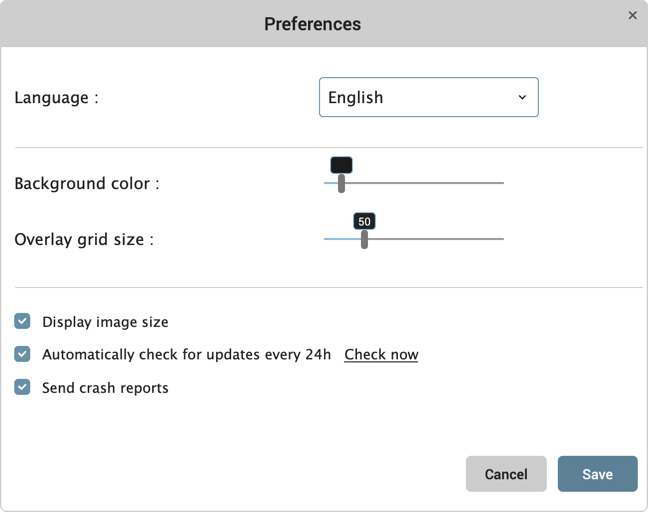
Preferences
After launching Nik Perspective, click the Settingsbutton, in the bottom left. In the floating window, you can alter your options for the following settings:
- Language Choose from one of the available languages. By default, the language selected is that of your operating system.
- Background color: Adjusts the gray level of the background to your liking, from white to black. Overlay grid size: Adjusts the size of the grid squares; the default value is 50.
- Display image size: Permanently displays the width x height of the image in pixels in the bottom right corner of the desktop.
- Automatically check for updates every 24 hours*: If the option is deactivated, you can make an immediate search by clicking on the link.
- I agree to participate anonymously in the Product Improvement Program*: By clicking on the link, you open a web page with more information (DxO Labs evaluates how users use the program, with the aim of developing and improving the product).
- Send crash reports*: In the event of an incident or crash, a diagnostic log is automatically generated and sent to DxO Labs for investigation.
- * Internet connection required.
To save your choices, click Save, otherwise click Cancel. No restart is required for the changes to take effect.
Aide en ligne
By clicking this button, in the bottom left, you will get access Nik Perspective’s online user guide (Internet connection required).
The menu bar
PC Menus

- File: open and close images, open recent images, save corrections, and close the program.
- Edit: Undo/Redo commands to cancel or reapply an image correction, image rotation commands, and access to Preferences.
- Display: switch to/from full screen mode, hide/show the control panel, and display/hide the grid in overlay.
- Help: Lets you access online help, Learning Hub tutorials, and the DxO website. You can also activate your product, check for updates, and access version information (About).
Mac Menus

- Nik 6 Perspective: access to version information (About) and Settings.
- File (standalone version): open and close images, open recent images or folders, save corrections, and close the program (standalone version), save corrections (plugin version).
- Edit: Undo/Redo commands to undo or redo a correction step in the image, and rotate left or right.
- Display: switch to/from full screen mode, hide/show the control panel, and display/hide the grid in overlay.
- Window: Lets you reduce/enlarge the window size.
- Help: Lets you access online help, Learning Hub tutorials, and the DxO website. You can also check for updates.
In the standalone version of Nik Perspective, File > Save overwrites the original file. File > Save As creates a new file.
In the plugin version, the Save button behaves in the same way as File > Save and so overwrites the original file with the new version.
Interface and layout
The Nik Perspective interface is composed of 5 main parts:
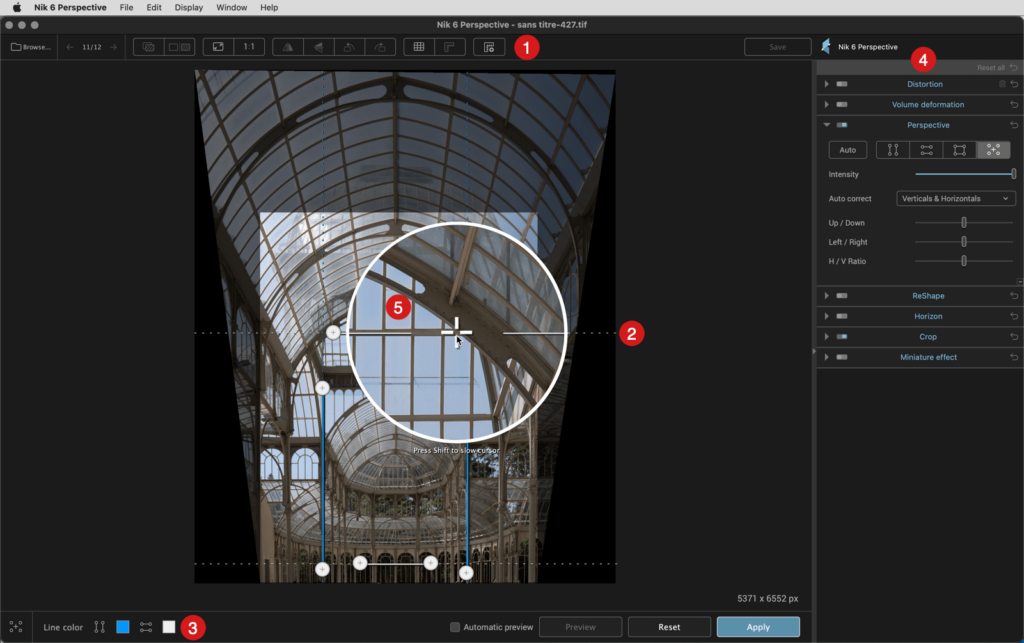
- The upper toolbar
- Image display area (in standalone mode)
- Lower toolbar and secondary lower toolbar
- The control panel (Correction Tools)
- The magnifying loupe (Perspective and Horizon tools)

When an image is opened in the correction section, the bottom right-hand corner of the display area shows the width and height of the image in pixels. The dimensions are refreshed each time an image is resized.
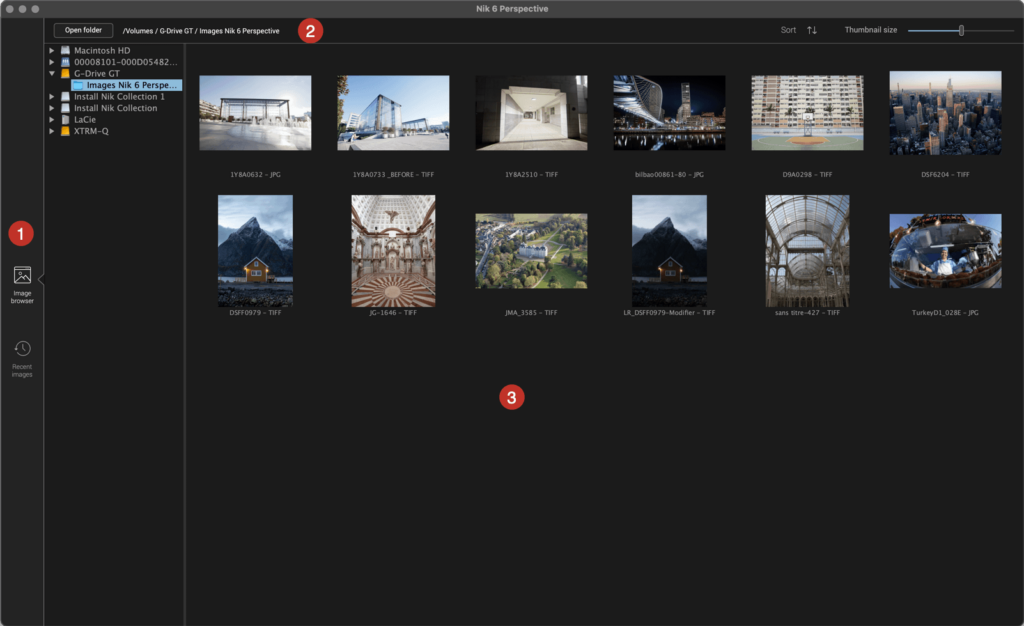
In standalone mode, Nik Perspective also has an Image Browser, composed of the following parts:
- Source browser (sidebar):
- Image Browser: displays the folder hierarchy on your hard drive in an adjustable-width panel. Click on a folder to view its contents.
- Recent images: displays recently processed images.
- The upper toolbar :
- Open folder: Opens a system dialogue box to select and display images from a particular folder.
- File path: shows the path to the selected folder.
- Sort: lets you display images according to selected criteria (shooting date, modification date, alphabetical order, and file type) in ascending or descending order.
- Thumbnail Size: Thumbnail size slider.
- Image Display Area:
- Displays the images in a folder as thumbnails (click to select a thumbnail, double-click to open it in the correction section.)
The upper toolbar
Opening, saving, image corrections tools, and navigation display mode options are located in the top section of the Nik Perspective window. The options available will depend on the mode (standalone or plugin).


- Managing files (standalone mode)
- Return to image browser: Takes you back to the Image Browser and the folder tree.
- Previous/Next Image: lets you switch from one image to another within the selected folder.
- Image count: Indicates the number of images in the selected folder and the order of the currently displayed image.
- Display modes
- Compare with the original image: clicking and holding this button lets you quickly switch from the corrected image to the original image in the display area (and vice versa by releasing).
- Display before and after correction side by side: Display the image before correction (left) and after correction (right) at the same time.
- Display size
- Fit to screen: The image is displayed in its entirety, taking up all the available space in the display window.
- 1:1 display: the image is enlarged at 100% (1 image pixel = 1 screen pixel).
- Flip and rotation tools (can be used in combination)
- The first two buttons flip the image horizontally and/or vertically.
- The other two rotate it by 90° to the left or right.
- Display Grid and Guides
- The left button lays a reference grid over the image (the default size of each square is 50×50 px by default, but can be modified in Preferencess).
- The button on the right shows or hides the guides (see paragraph 6 below).
- Displaying Guides
- Lets you show or hide the toolbar for reference guides.
- Save (standalone mode)
- In standalone mode, lets you finalize and save your corrections.
- Display Fullscreen (PC)
- The Nik Perspective window occupies the whole of your screen. To return to the usual display, just click the button again.
The lower toolbar
Depending on the current correction tool, a toolbar is displayed below the image (Perspective, Horizon, ReShape, and Crop tools). It includes specific options for the active tool, as well as the common commands as follows:

- Selected tool: this icon is a simple reminder of the active tool.
- Line / grid color: by clicking on the white tile (default color), you can change the color of lines in the Perspective, ReShape, Horizon and Crop tools.
- Preview: Available only with the Perspective and Horizon tools, this tool lets you refresh the image after making corrections.
- Reset: Cancels all corrections made and returns to the original image.
- Apply: Applies the corrections and closes the lower toolbar.
Second Lower toolbar (plugin mode)

In the plugin version of Nik Perspective, a second bar is located at the bottom of the window, with the following options:
- Preferences: Opens the program settings window.
- Help: access Nik Perspective online help (Internet connection required).
- Cancem: Lets you exit Nik Perspective, but a dialog box will ask you whether you want to save your changes first. The Cancel option closes the dialog box and lets you stay in Nik Perspective.
- Save: Applies the corrections permanently and then closes the plugin before returning to the host application.
Correction tools panel
The different correction tools – Distortion, Volume deformation, Perspective, ReShape, Horizon, Crop and Miniature effect – will be looked at in more detail in the corresponding sections. Here we describe the general features of the palettes and the options that they have in common.
Some tools are also likely to display warning messages, shown below.
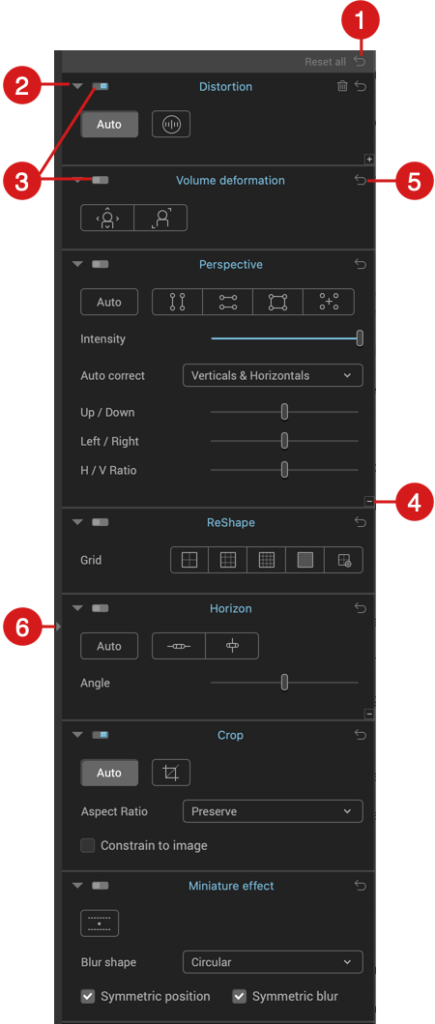
- Reset all: Cancels all corrections and returns to the original image. See Reset correction below.
- Expand or collapse controls: the control palettes contain numerous options and adjustment sliders. To expand them, click on the arrow-shaped icon in the top left corner of each section. Do the same thing to collapse them.
- Enable / disable palette: The button indicates the palette’s operating status (left and gray: disabled; right and blue: enabled). Click on the switch to activate it, or temporarily deactivate it, and its associated corrections.
- Hide tools: When the entire contents of a palette is expanded (all tools and sliders showing), you can return to the standard view by clicking on the “-” (minus) sign in the bottom right corner of each palette.
- Reset correction: Each tool in a palette has a reset button.
- Hide/show controls: Click to hide or reveal the side panel.
Messages d’avertissement
Warning messages linked to EXIF data or DxO Optics Modules may appear in the Distortion, Volume deformation and Perspective palettes of Nik Perspective.
The Guide Tool
About the Guide Tool
While Nik Perspective provides you with a grid overlay for the image, the Guide tool goes further by letting you draw and position up to 10 horizontal and/or vertical lines. This lets you place a straight reference line anywhere in the image to fine-tune your geometric corrections, whatever they may be: distortion, volume deformation, perspective, ReShape, horizon, etc.
Guides have no influence on geometric corrections, they are only intended as visual aids.
Adding Guides

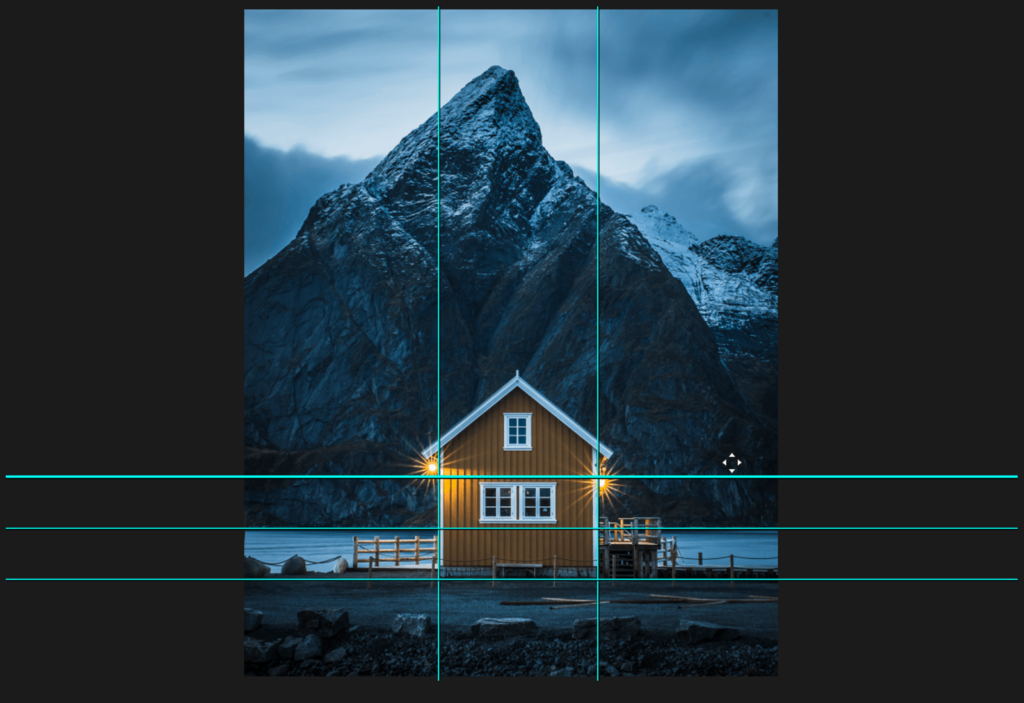
To add guides:
- Go to the upper toolbar and click on the Guides button (the last button on the right).
- In the toolbar under the image, click on the Vertical Guide or Horizontal Guide button.
- Position the mouse at the desired point in the image (the pointer will be a 4-direction arrow).
- Click to place the guide.
- You can move the guide around using the mouse.
- Click somewhere else in the image to place another guide (and change its orientation by clicking on the appropriate button in the toolbar).
- Click Apply to confirm the position of the guides.
Using Guides

The Guides work as follows:
- The two buttons located in the toolbar let you create either vertical guides (left button), or horizontal guides (right button), with the maximum number of guides being 10.
- An active guide is highlighted by black line on its right side (vertical guide) or on its lower side (horizontal guide).
- To re-activate a guide, just click on it.
- To remove a guide, click on it to activate it and then hit Delete on your keyboard. You can also double-click on it to delete it.
- To change the color of the guides, click on the Line Color tile in the toolbar. This will display a color picker dialogue so you can select a different color.
- The Reset button in the toolbar will remove all guides.
- Guides can be temporarily hidden or displayed using the Show/Hide Guides button in the upper toolbar.
Shortcuts
| Commande | Windows | OS X |
| Fit display to screen | F3 | Cmd + 0 |
| Zoom to 100% | F4 | Cmd + 1 |
| Zoom avant | Ctrl + + | Cmd + + |
| Zoom out | Ctrl + – | Cmd + – |
| Show/Hide superimposed grid | G | G |
| Move anchor points | Up/down, left/right arrows | Up/down, left/right arrows |
| Toggle between anchor points | Tab | Tab |
| Quit | Alt + F4 | Cmd + Q |
| Previous preset | Ctrl + Z | Cmd + Z |
| Redo | Ctrl + Y | Cmd + Shift + Z |
| Preferences | Ctrl + Shift + P | Cmd + , |
| Show image before and after correction | Ctrl + D | D |
| Update qss | F | Cmd + D |
| Exit full screen mode | F ou Esc | Ctrl + Cmd + F or Esc |
| Minimize window | Cmd + M | |
| Show/Hide controls | P | P |
| Aide en ligne | F1 | Cmd + / |
| Slow mode for Perspective and Horizon tools | Press Shift as you move anchor points around the image | Press Shift as you move anchor points around the image |
Corriger la distorsion
À propos de la distorsion
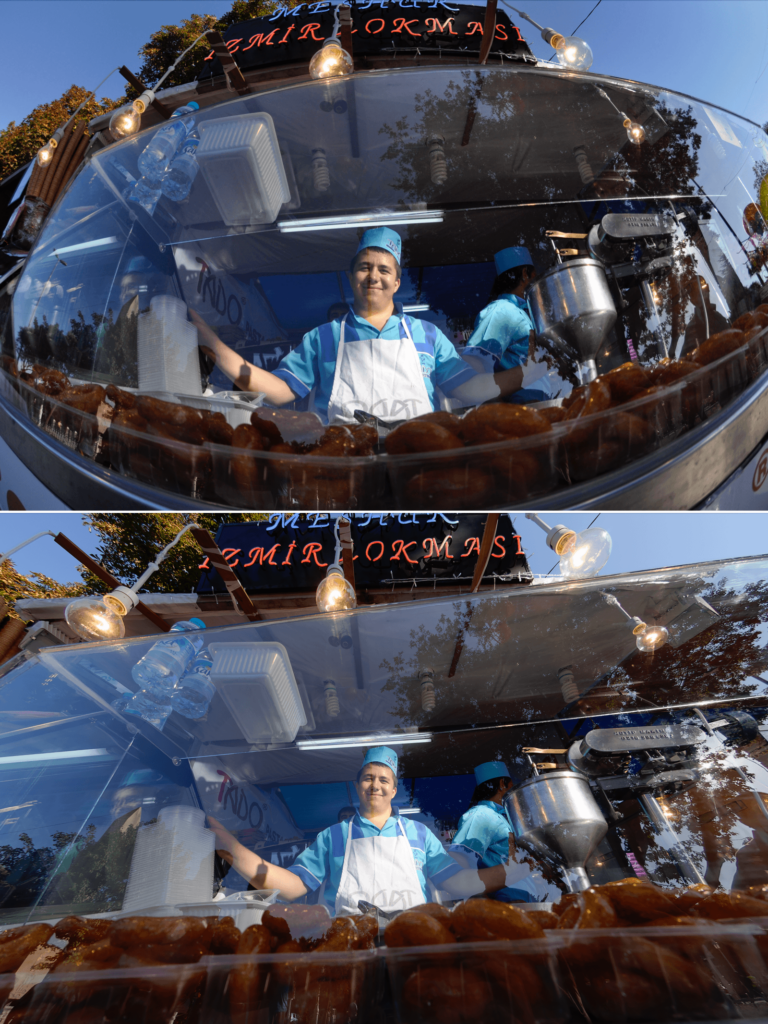
All lenses are affected by varying degrees of distortion. There are two types:
- Barrel: Lines are bent towards the exterior of the image.
- Pincushion: Lines are bent towards the interior of the image.

Some lenses are affected by both phenomena — for example, a zoom lens can display barrel distortion at shorter focal lengths and a pincushion distortion at longer focal lengths, not to mention the various distortions in between.
Nik Perspective uses DxO Optics Modules to automatically correct distortion, so we advise you not to use the lens correction tools in the host-application and to disable any on your camera.
Nik Perspective allows you to correct distortion for all lenses, either automatically, using DxO Optic Modules, or manually, if there is no DxO Optics Module for your camera hardware (body and lens).
In the case of a fish-eye lens, if it is supported by a DxO optics module, typical deformation will be corrected automatically, but you can reduce the degree of correction or even set it to zero using the Intensity slider, if you want to keep the look.
For best results, we recommend correcting distortions before using any of the following tools:
- Volume Deformation.
- Perspective.
- ReShape.
Manage DxO Optics Modules
Downloading and installing DxO Optics Modules
A DxO Optics Module management dialog box appears when you perform an automatic distortion correction. This dialog box displays the DxO Optics Module(s) that can be used and gives you the option of choosing your own in case there is any ambiguity, that is – when Nik Perspective cannot identify the camera body and lens used for shooting.

The dialog box also displays the status of the modules: Installed, update available, or to be downloaded.
- Select the corresponding module then click OK.
- A progress bar is displayed; installation and activation are immediate when the download completes. There is no need to restart the program.
A DxO Optics Module is not available
If no DxO optics module is available, automatic correction will not be applied and the Automatic option will be disabled. In which case, you can perform a manual correction.
You have the option of deleting the DxO Optics Module for the image being processed by clicking on the Recycle Bin in the top right corner of the Distortion palette.
Automatically correcting distortion
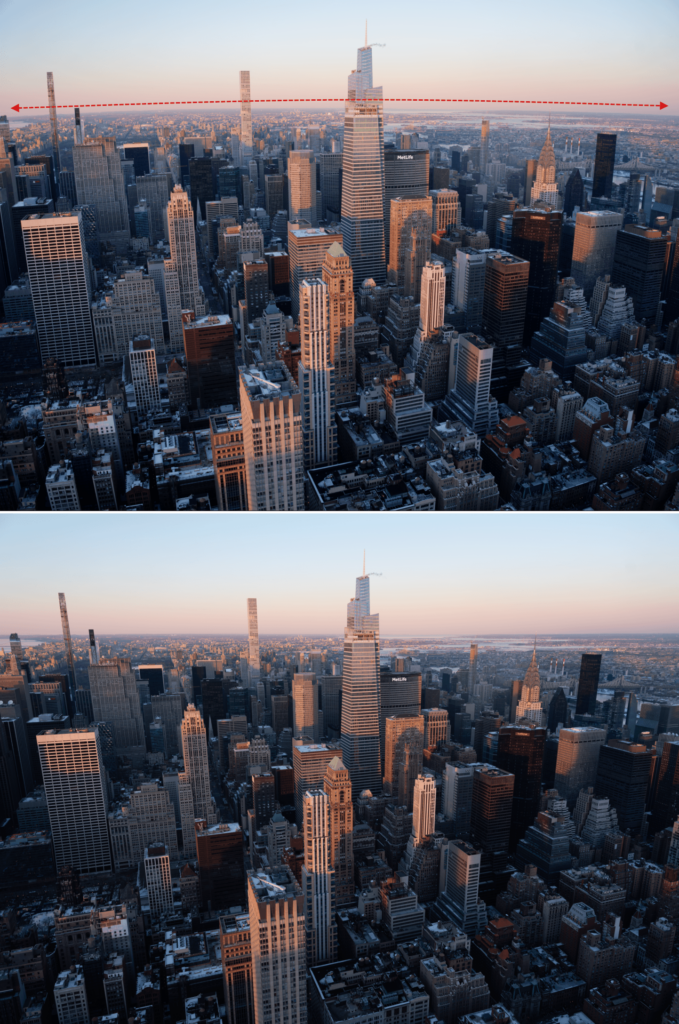
If your equipment is supported by a DxO Optics Module, you can correct your image automatically.
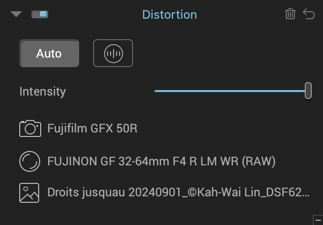
- Opening the image to be corrected in Nik Perspective.
- In the Distortion palette, click the Auto button.
- A dialogue box will indicate whether a DxO Optics Module for your equipment is already installed or whether there one is to download.
- Click on OK to correct the image using the selected DxO Optics Module. The dialog box closes.
When a DxO Optics Module is installed and active, the Distortion palette will display the following information: camera model, lens model and the name of the original file.
When EXIF metadata is missing
If for some reason Nik Perspective cannot find the EXIF metadata information it needs, a dialog box will ask you to locate the original image in order to retrieve the missing information.
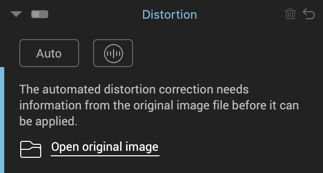
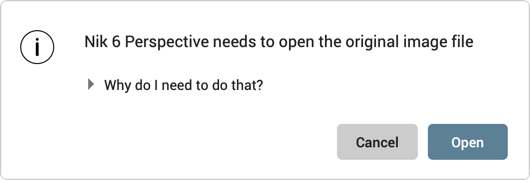
- Opening the image in Nik Perspective.
- If a dialogue box in the Distortion palette requests access to the original file, click on Open original image.
- Click Open in the dialog box that appears on top of Nik Perspective: a system dialog box opens to locate the original. You will need to find the JPEG or RAW image file that was loaded directly from your camera before processing.
- After finding and selecting the original image, click on Open. If the corresponding DxO Optics Module is not already installed, a new dialogue box will open and prompt you to download it (if available); otherwise, it will display the information about the shooting equipment and the name of the original file.
- When corrections are made, click Save, bottom-right: Nik Perspective closes and the corrected file is sent to the host application.
Corriger manuellement la distorsion
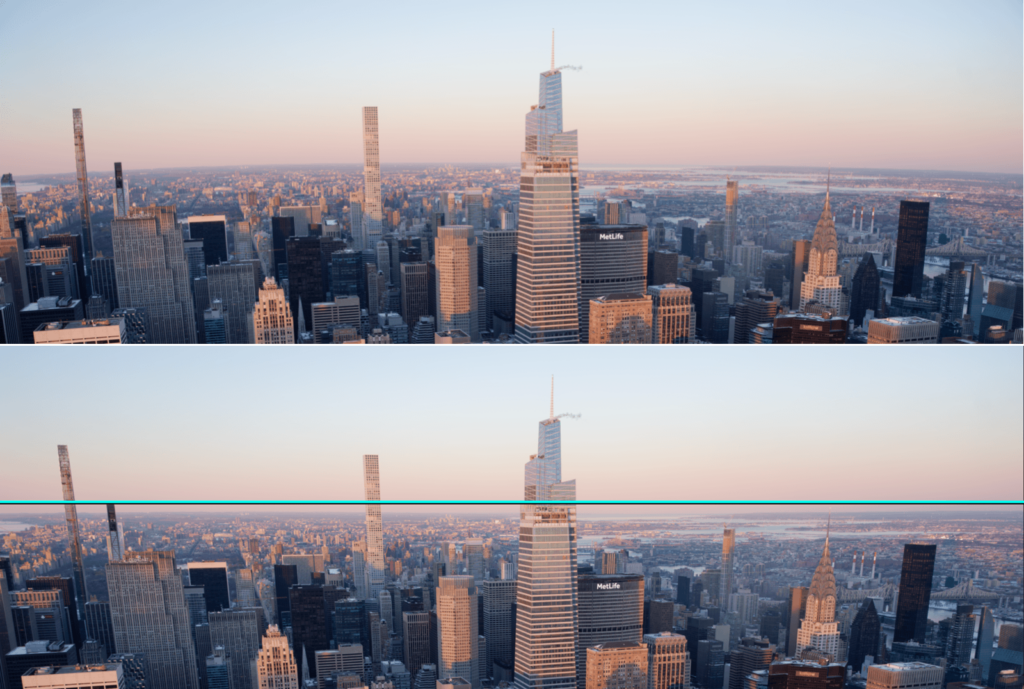
If your shooting equipment is not supported by a DxO Optics Module, you can manually correct your image.
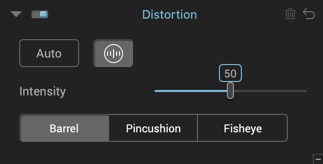
- Opening the image to be corrected in Nik Perspective.
- In the Distortion palette, click the Manual button (a circle with vertical markings).
- Depending on the type of distortion visible in the image, select either Barrel, Pincushion, or Fisheye.
- The correction will be applied immediately.
- If necessary, you can use the Intensity slider to fine-tune the correction.
Corriger la déformation de volume
À propos de la déformation de volume
The deformation of a subject at the edge of an image is a geometric flaw that is frequently observed on interior, event, and wedding photos.
Known as volume deformation, it frequently occurs when using a wide-angle, or wide-angle zoom, lens to photograph objects, people, or groups of people. Elements at the edges of the image appear distorted and stretched.
Déterminer le type de déformation de volume
Look carefully at your image to determine the kind of distortion affecting it:
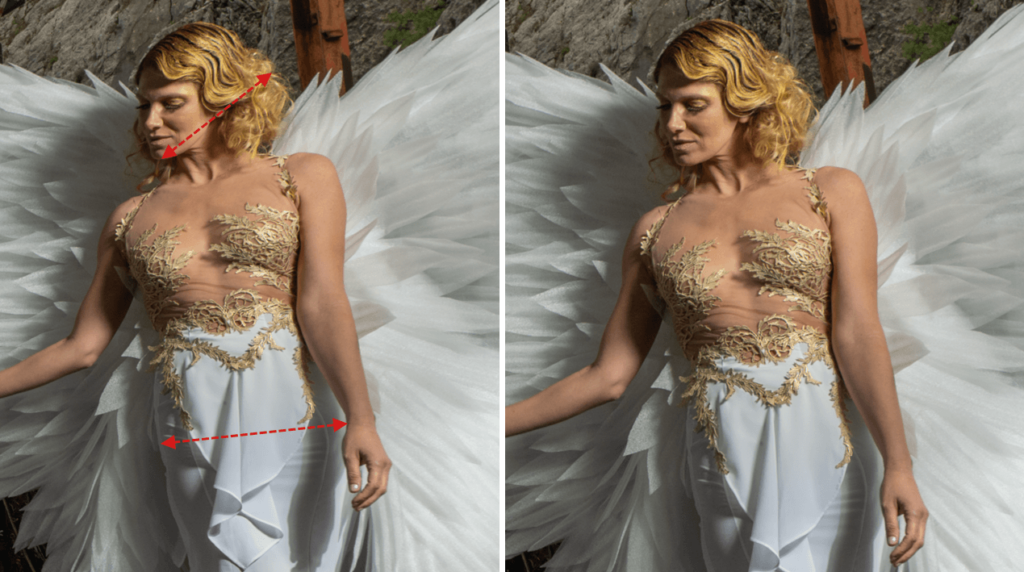
If spherical objects close to the edge of your image appear stretched or flattened along a vertical or horizontal axis then your image is suffering from volume deformation. In this case, use the horizontal/vertical correction tool.
If objects seem to be stretched towards the corners of the image, then you are dealing with diagonal volume deformation, in which case you will need to use the diagonal correction tool.
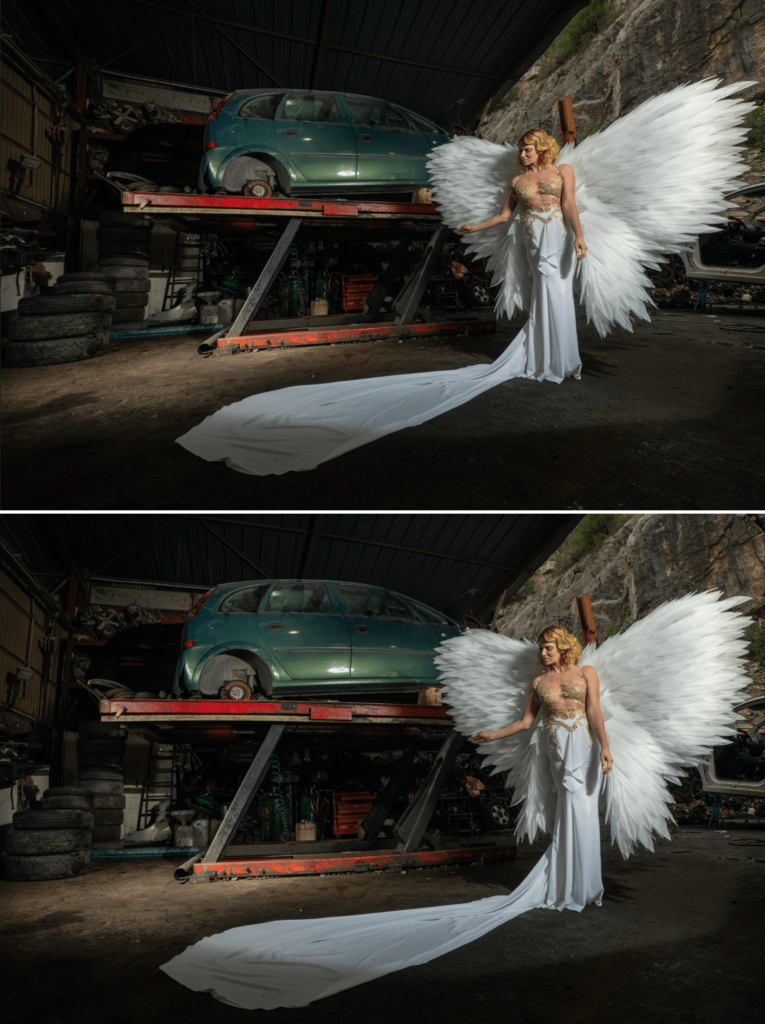
Correcting horizontal/vertical deformation
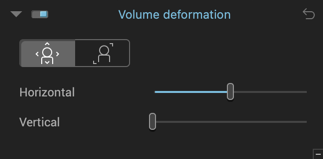
To correct horizontal or vertical volume deformation:
- After opening your image in Nik Perspective, enable horizontal or vertical volume distortion correction by clicking the Horizontal/Vertical button on the left.
- The correction is automatically and immediately applied to the image.
You can use the sliders to adjust the settings :
- The Horizontal slider stretches the image content toward the edge of the photo (slider to the left) or compresses it toward the center (slider to the right). The default value is 100 (slider in center).
- The Vertical slider flattens the image content vertically. Its default value is 0 (slider on the left).
Diagonal deformation
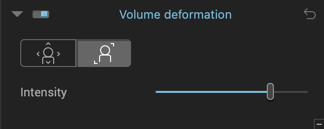
To correct diagonal volume deformation:
- After opening your image in Nik Perspective, enable diagonal volume distortion correction by clicking on the Diagonal button (right button).
- The correction is automatically and immediately applied to the image.
For best results
If in doubt, try using both corrections to see which gives you the best result.
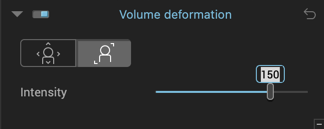
If necessary, you can manually fine-tune the automatic correction by adjusting the Intensity slider. By moving the slider to the left, the image will be progressively stretched and distorted toward the center, moving it to the right will stretch and distort it toward the edges. The default setting for this slider is 150.
You can also click on the number and modify it directly. You can reset the slider to its default setting by simply double-clicking it.
Redresser les perspectives
À propos des perspectives
In architecture, the point of view on a building often forces the photographer to shoot from a high or low angle. In such cases, straight lines in the subject will look warped, especially around the edges of the image.
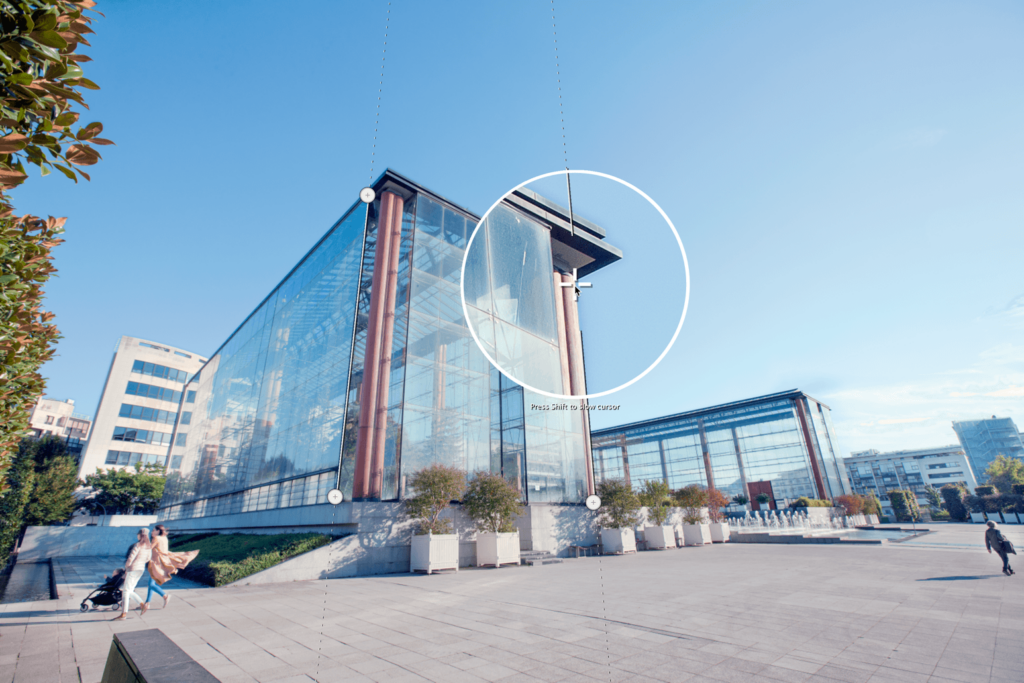
Nik Perspective features tools to let you automatically correct perspectives, force parallel verticals, force parallel horizontals, force a rectangle, and perform an 8-point rectangular correction (with independent sides.)
Functions common to Perspective and Horizon tools
A number of options and features are shared by both the Perspective and Horizon tools, since they employ the same straightening lines.
- The lines can be moved, tilted, shortened, or extended with the mouse.
- Use the anchor points at each end of the line to position it. When you click and drag, the pointer turns into a magnifying loupe for greater precision.
- You can slow down the mouse pointer by holding down the Shift key as you position the anchor point.
- Anchor points can be placed with precision by using the arrow keys on your keyboard (click on the anchor point to activate it).
- An active anchor point is indicated by a dark gray circle.
- Hit the tab key to switch from one adjustment line to the other.
- Once you have adjusted the perspective or horizon, the image will be cropped so, the lost background is indicated by a dark translucent mask. A steeply-angled shot will require such cropping that it may cut off parts of subjects that are tightly framed.
- When using the 2 line (Force parallels and Rectangle) or 3 line (8 point) tools, the automatic preview checkbox In the toolbar lets you display the corrections in real time. The automatic preview is only available with the Perspective tools.
- You can also see the corrections in real time by pressing the Cmd (Mac) or Ctrl (PC) key while moving an anchor point. The preview appears after you release the mouse button.
- Alternatively, you can simply click Preview after you have positioned your adjustment lines.
- You can display the composition grid to check that the main elements of your image have been straightened correctly, rather than relying on the naked-eye.
Redressement automatique des perspectives
Nik Perspective lets you automatically straighten perspectives and resume these corrections, if necessary. Automatic corrections are preserved if you then decide to go into one of the manual modes (Forcing parallels, Rectangle, and 8 points).
After you have opened the image in Nik Perspective, go to the Perspective palette and click the Auto button, by default Nik Perspective will automatically correct verticals and horizontals.
If you are not satisfied with the result, you can select one of two different modes within the Auto correction palette, Verticals only or Horizontals only; the correction will be applied as soon as you select it from the drop-down menu.
You can use the Intensity slider to adjust the automatic correction, or you can use the advanced settings to modify the perspective (see the Advanced settings section).
To reset the perspective settings, click on the cancel button (curved back arrow) in the top right-hand corner of the palette.
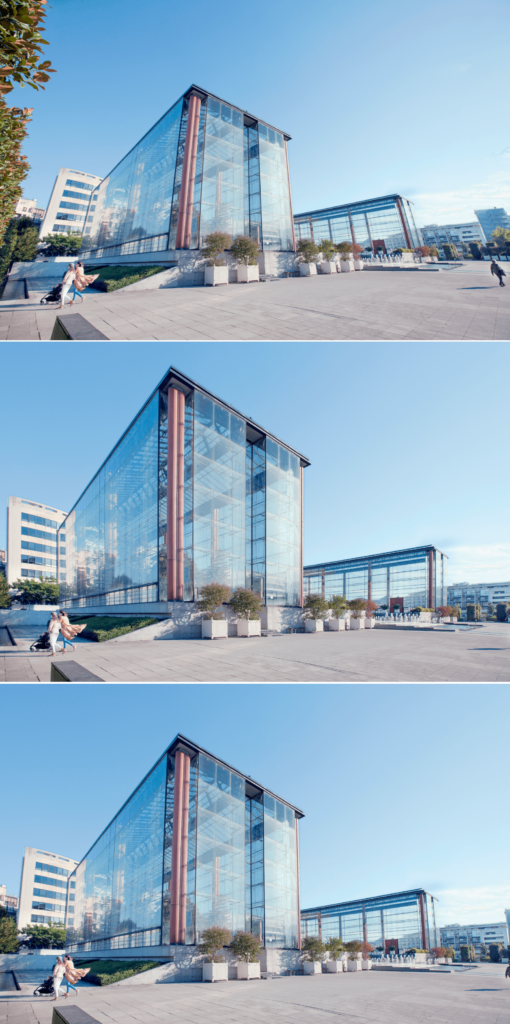
Original image (top), Auto mode (center), Auto mode with intensity reduced to 75 (bottom).
Forcer les parallèles verticales
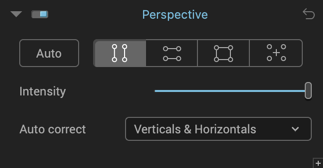
To correct receding lines and restore verticals:
- After opening your image in Nik Perspective, go to the Perspective palette and click the Force parallel verticals button.
- Two vertical lines, each one with two circular anchor points, will be superimposed on your image.
- Choose two vertical reference elements in your image, preferably located on the same plane, for optimal correction.
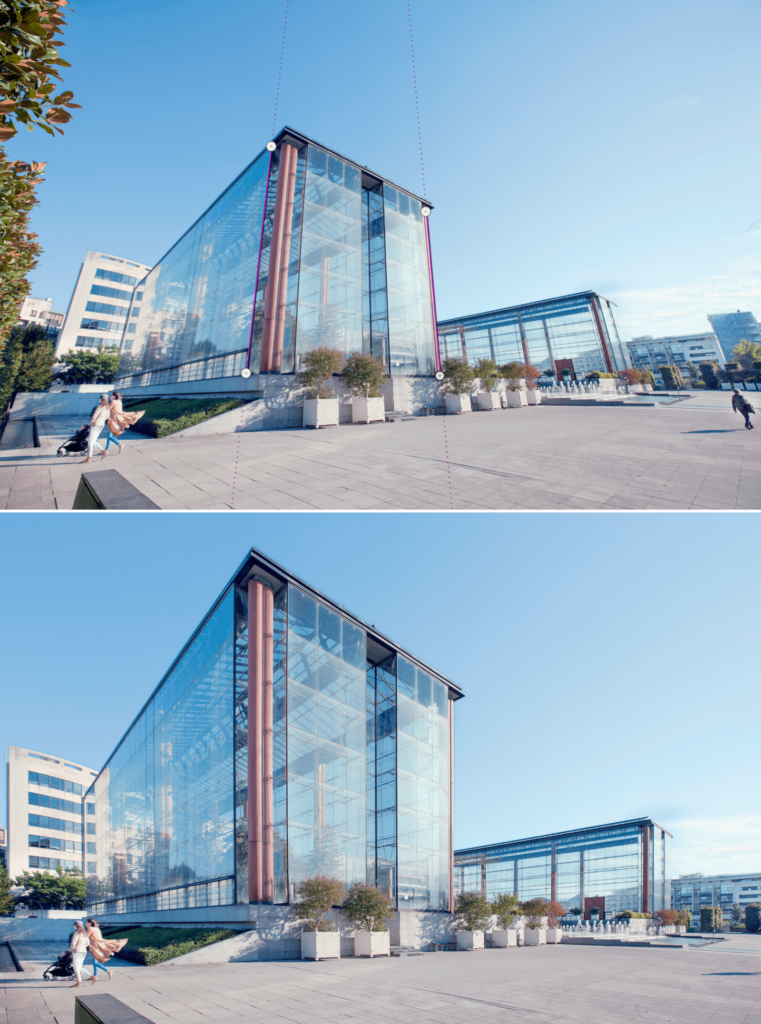
- Place the mouse pointer on one of the anchor points. Click on an anchor point to select it: a magnifying Loupe will appear to help you place the anchor point with greater precision. Move the anchor point to one of the ends of your reference element.
- Place the second anchor point so that it traces the line of your vertical element. Follow the same procedure for the second line.
- Check your correction with automatic preview enabled or by clicking on the Preview button in the toolbar (the transparent dark areas indicate the portions of image that will be lost in cropping).
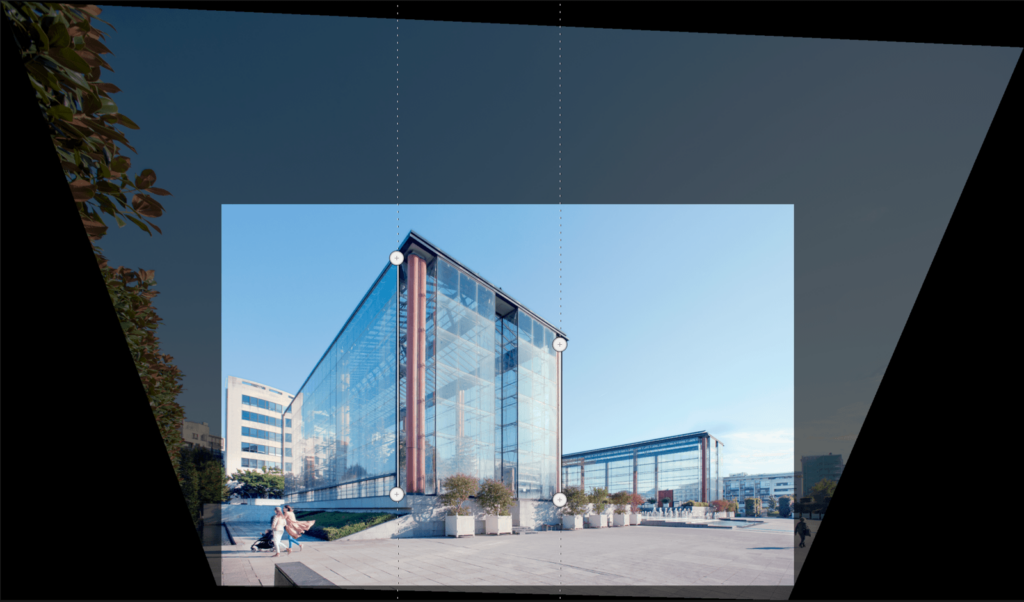
- To approve and apply the correction, click the Apply button on the lower toolbar.
Forcer les parallèles horizontales
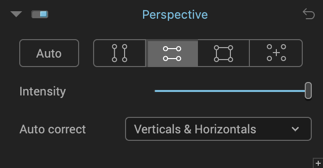
Forcing parallel horizontals follows the same principle as forcing parallel verticals except that the reference lines are horizontal, letting you align and level, for example, the top and bottom of a building, a window frame, or a door. Here’s how to proceed:
- To activate the correction for horizontal perspectives, click on the Force Horizontal Parallel button. Two horizontal lines with two circular anchor points will be superimposed on your image.
- Choose two horizontal reference elements in your image.
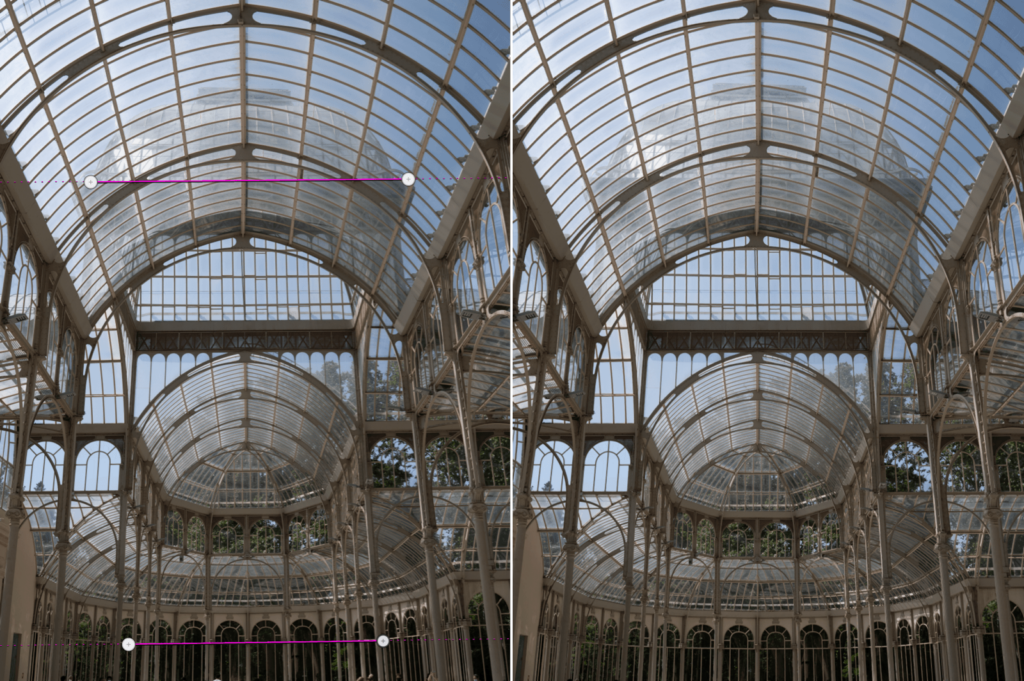
- Place the mouse pointer on one of the anchor points. Click on the anchor point to grab and move it to one of the ends of your reference element. Move the second anchor point so as follow the line of your horizontal element. Do the same with the second line.
- Check your correction with automatic preview enabled or by clicking on the Preview button in the toolbar (the transparent dark areas indicate the portions of image that will be lost in cropping).
- To approve and apply the correction, click the Apply button on the lower toolbar.
Forcer le rectangle
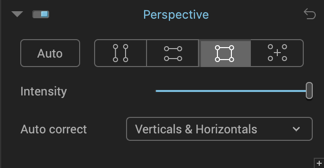
A third perspective correction function lets you use a reference rectangle for simultaneous correction of vertical and horizontal perspectives, for each side. The applications are numerous: you can restore warped forms to their original shapes in a scene, or straighten an interior space (such as an airport arrivals hall, a museum, or a palace) that was taken at a steep angle or with a tilt when it was shot. Here’s how to force a rectangle:
- To activate the correction, click on the Rectangle button.
- You can move all four lines: place the anchor points on the axes of the vertical and horizontal reference lines in the image (ideally they should share the same shooting distance, that is – be equidistant from the camera lens).
- Check your correction with automatic preview enabled or by clicking on the Preview button in the toolbar (the transparent dark areas indicate the portions of image that will be lost in cropping).
- To approve and apply the correction, click the Apply button on the lower toolbar.
Moving one anchor point on the Rectangle affects both a vertical and a horizontal line.
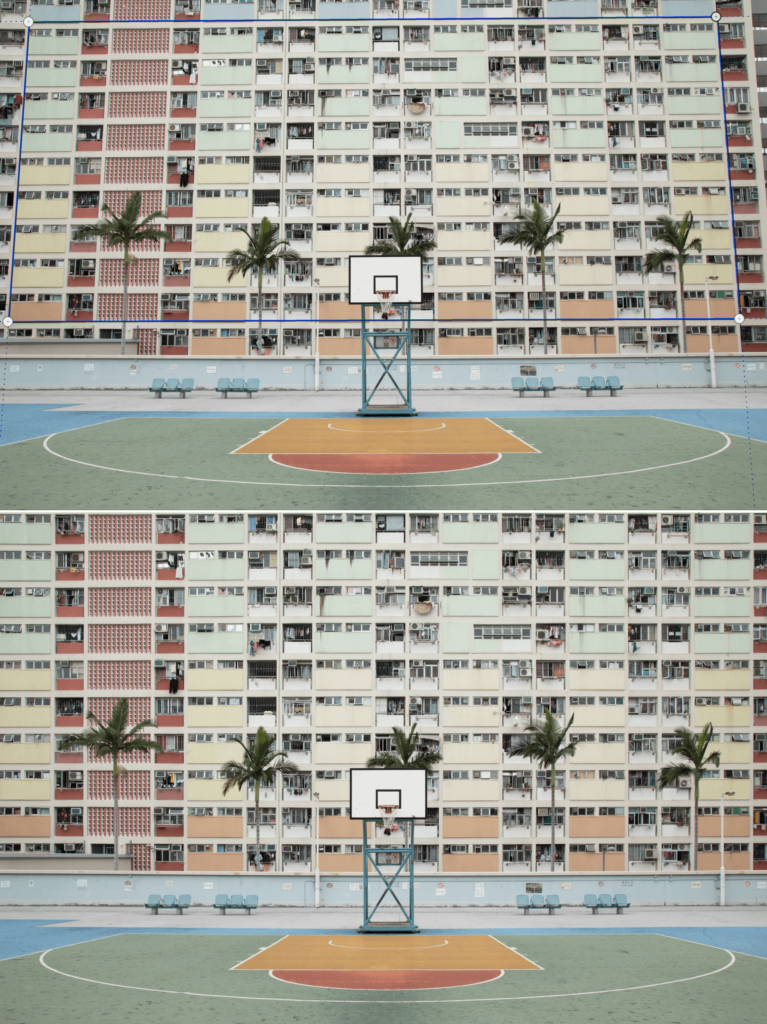
8-point correction
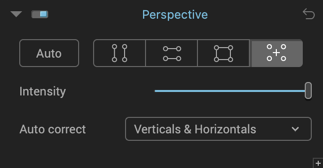
8-point perspective correction uses the same principle as Force rectangle, but you can position the lines independently of each other on different planes, which gives you greater flexibility in complex correction situations, such as when the elements to be straightened are at different distances from the camera. 8-point correction works as follows:
- To activate the correction, click on the 8-point button.
- Position the lines on your reference verticals and horizontals, even if they are not on the same plane (the same distance from the lens).
- Check your correction with automatic preview enabled or by clicking on the Preview button in the toolbar (the transparent dark areas indicate the portions of image that will be lost in cropping).
- To approve and apply the correction, click the Apply button on the lower toolbar.
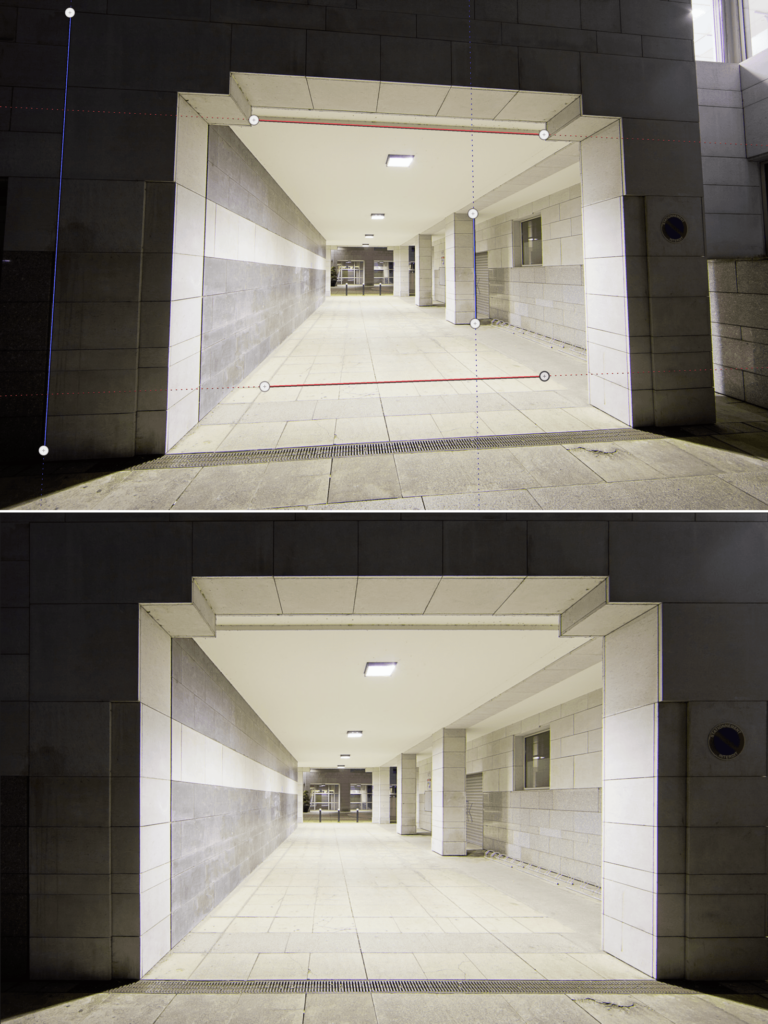
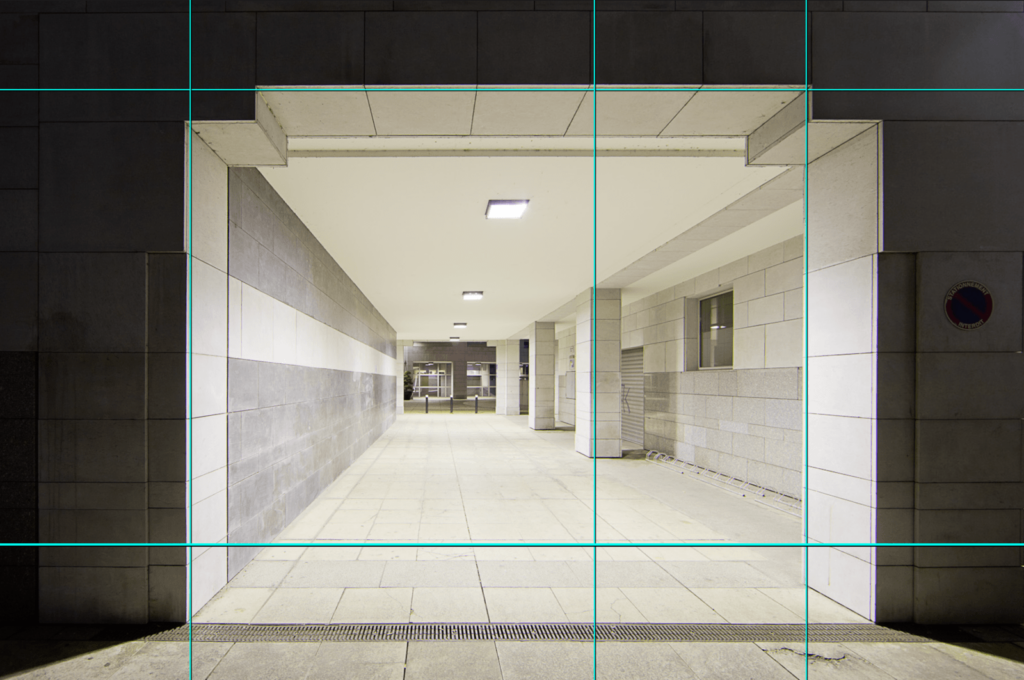
Perspective Sliders
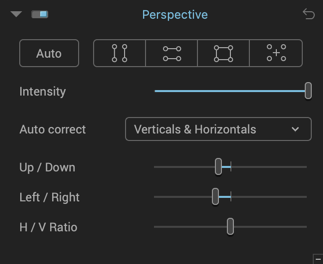
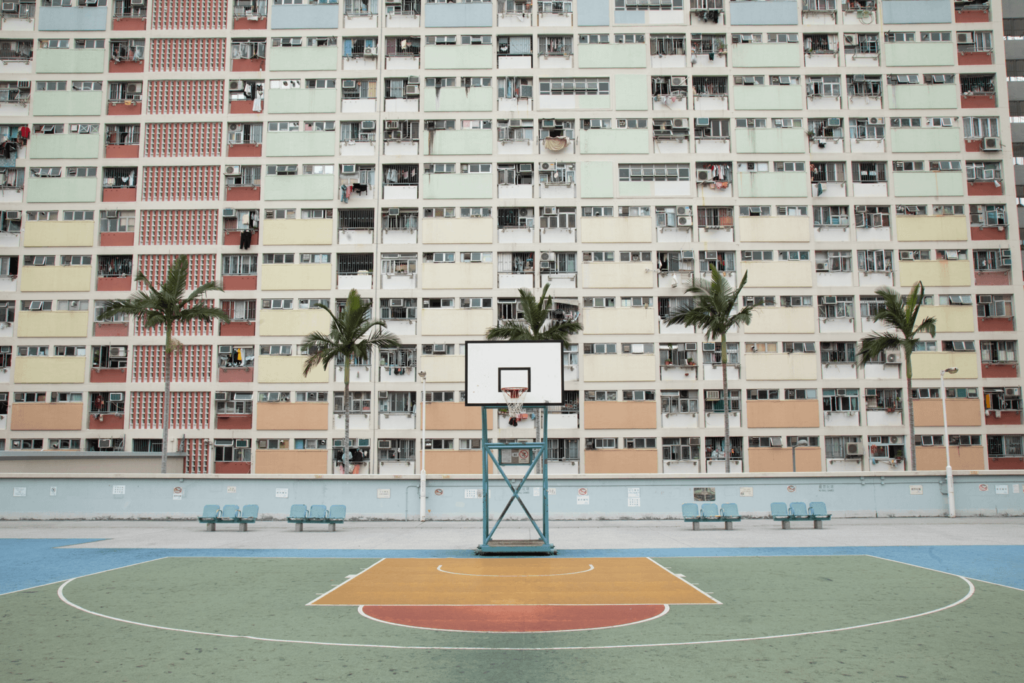
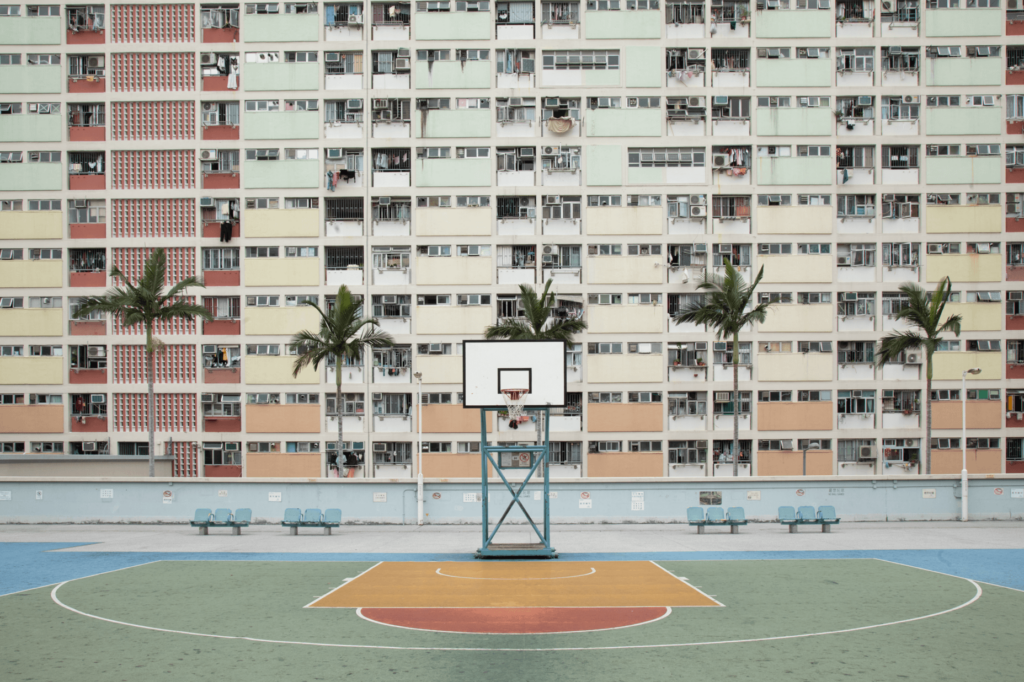
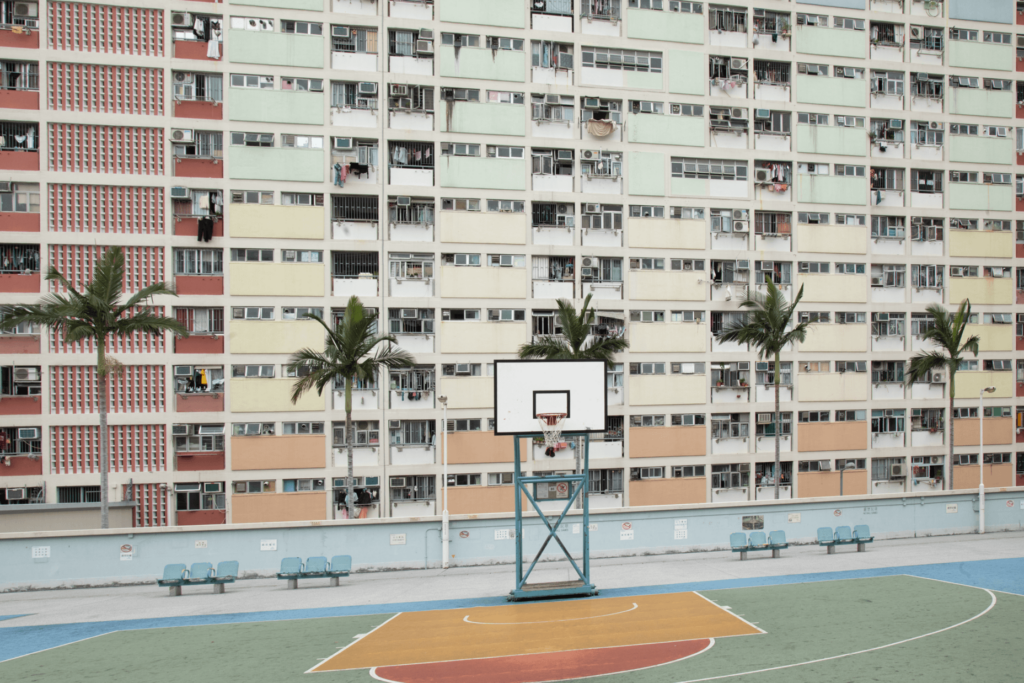
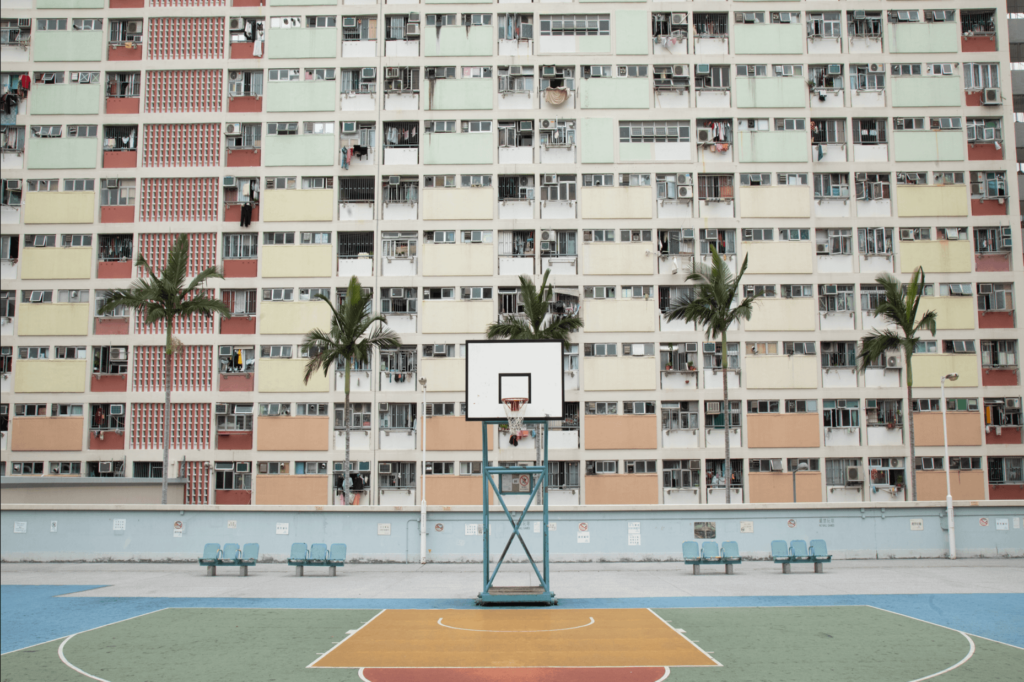
The Perspective palette provides four sliders for fine-tuning correction settings:
- Intensity: This slider, with a default value of 100, helps you find the best compromise between possible corrections and the most natural rendering. You can fine-tune how natural the perspective correction looks by, for example, setting the Intensity slider to 75 instead of 100. (Of course, the setting will depend on the subject and on the type of rendering you are looking for).
- Up/Down: Turns the image on a horizontal axis. If the image lacks reference lines, use this option to correct a shot that was not taken in perfect line with the subject.
- Left/Right: Turns the image around a vertical axis.
- H/V Ratio: This slider lets you fix distortions that sometimes accompany perspective corrections. The default value is 0. Moved to the left, the image is compressed vertically; moved to the right, the image is compressed horizontally.
For the Perspective palette, refer to the Warning Message section for more information about messages concerning the absence of EXIF data and the impossibility of performing an automatic correction of the H/V aspect ratio.
ReShape Tool
About the ReShape Tool
The ReShape tool lets you locally modify one or more elements in the image, using a deformable point grid. It has various uses:
- Refine, equalize, or alter the proportions of an object.
- Refine geometry corrections (perspective adjustment, volume distortion).
- Compensate for the curvature of a straight line or the horizon.
There are all sorts of uses for all types of image: landscape, architecture, still life, portrait, etc. Like all other Nik Perspective tools, corrections and distortions applied to the original image are reversible; only saved images have been definitively modified.
Interface
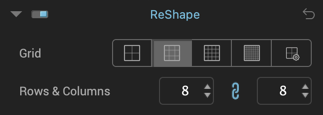
Palettes
The ReShape palette contains the following elements:
- Grid Presets: These 4 buttons let you select a predefined grid in rows and columns 4 x 4, 8 x 8, 16 x 16, or 32 x 32.
- Customized: This button lets you choose the number of rows and columns (see next point).
- Rows and Columns: These fields indicate the number of rows and columns in your grid, you can change them by typing numbers directly into the fields or by clicking on the up/down arrows. The minimum number is 1, the maximum is 32.
- Unlink: clicking on the chain icon in between the Rows and Columns fields disassociates the number of rows from the number of columns so you can have a 8 x 16, 24 x 2 grid, etc. (up to 32 in each direction.) To relink the Lines and Columns, click on the chain icon again.
The lower toolbar

In addition to the Reset and Apply buttons, the toolbar lets you change the color of the line. Line color: clicking on the blue tile opens a color picker to change the color of the grid lines to alter their visibility relative to the colors and brightnesses in the image.
How to Use
Using the ReShape tool is easy: just grab a point where any two lines meet to distort the image from there. The points have 3 states:
- Blue: unused and inactive.
- Blue-white-blue: active point, currently in use.
- Blue with white dot: inactive modified point.
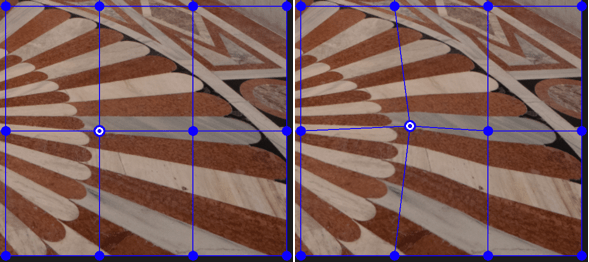
Right: a modified active point.
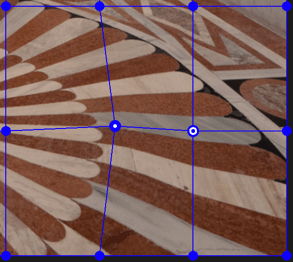
Blue-white-blue point: active point.
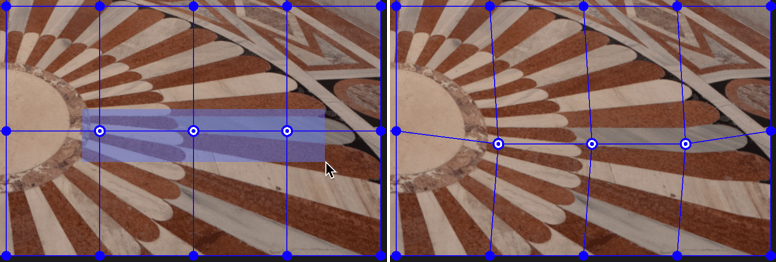
You can move a point in any direction and the further you go the more pronounced the locally applied distortion will be.
Each active point or group of active points can be moved as follows:
- By using the mouse, for all directions.
- Using the arrow keys (Up, Down, Left, Right) on the keyboard. Diagonal movement is possible by simultaneously holding down 2 keys at once (e.g. Left and Up to move it at an angle of 45°). The point will move when you hold down a key, and stop when you release it. The point moves in increments of 1 pixel but if you hold down the Shift key the point will move in increments of 10 pixels.
Each point is completely independent from the others, but you can create a group of points by dragging a rectangle over them with the mouse. You can only create and use one group of points at a time so if you create another group of points this will replace the previous group (but the points will be marked as modified).
To correct small items or localized elements, you can increase the number of points by adding rows and columns to the grid. Similarly, you should consider reducing the number of points when dealing with larger elements.
Large-scale corrections and corrections near the edges may result in distortions that force you to reframe the image (areas to crop are shown in black).
Be careful, any corrections you make with the Perspective tool will have an effect on the shape of the grid.
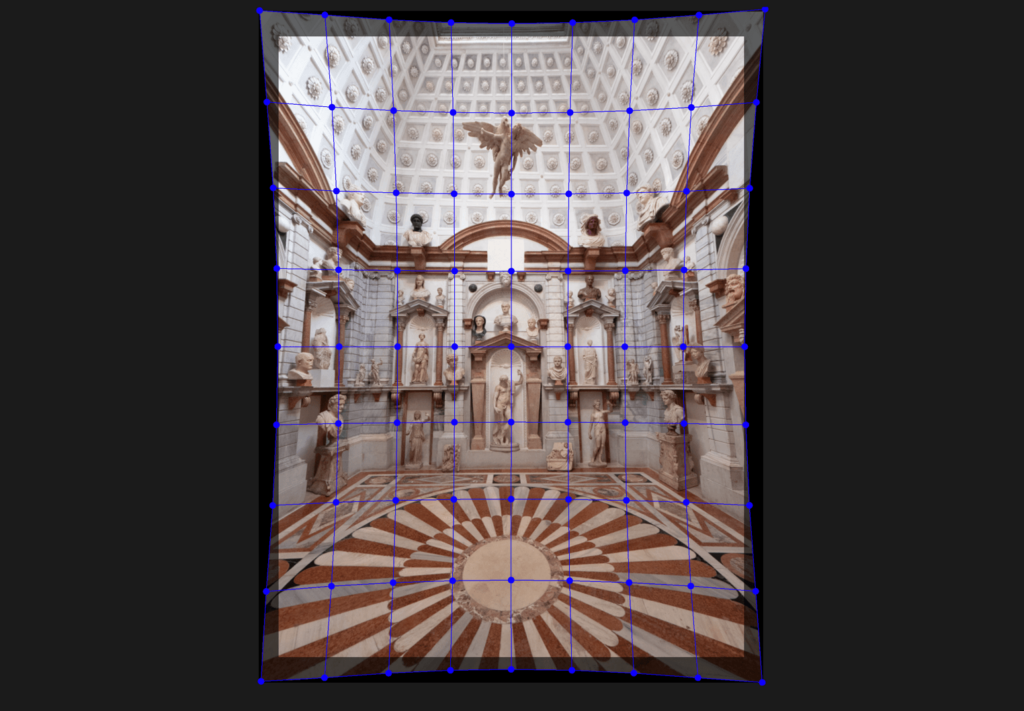
Indeed, your image will get distorted, creating black areas (without content), and will need cropping. If you apply the ReShape tool following this, the grid will cover the image as it really is (deformed) and so will not be based on the cropped version.
IMPORTANT: If you decide to change the size of the grid, this will reset the corrections.
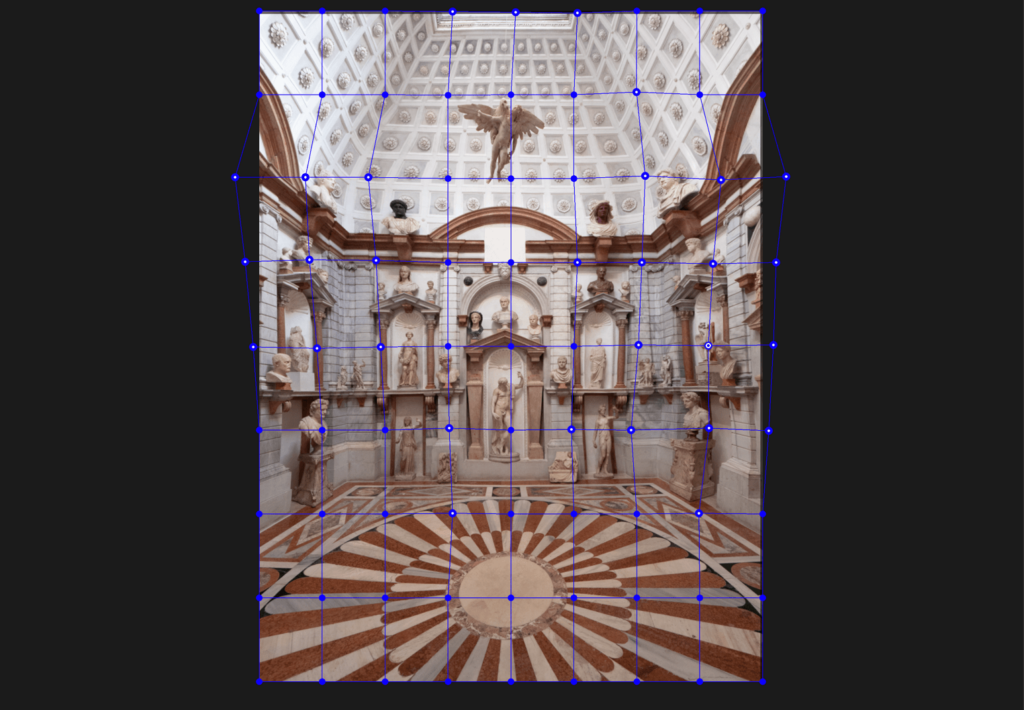
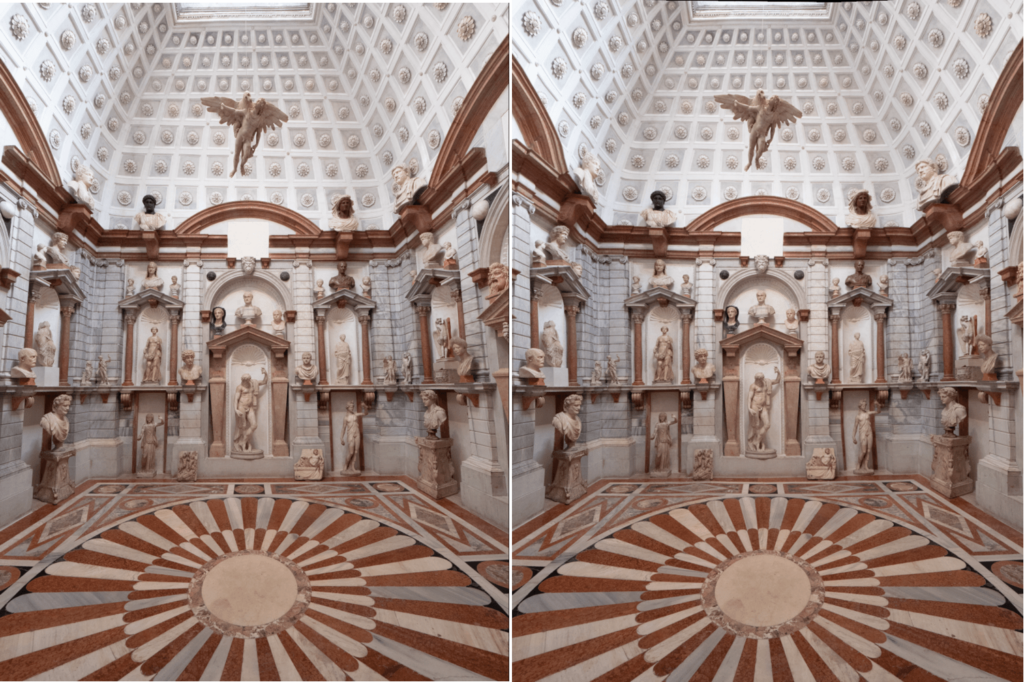
Redresser l’horizon
À propos de l’horizon
A common flaw in landscape photography: the horizon is off by a few degrees due to slight camera tilt when the picture was taken. Similarly, vertical elements such as poles or trees appear tilted. The solution to this problem is simple: adjust the entire image by a few degrees.
The Horizon tool functions in exactly the same way as the Perspective tool, please refer to the beginning of the Perspective chapter for a description of common tools and functions.
Note that you can also adjust the horizon with the Crop tool.
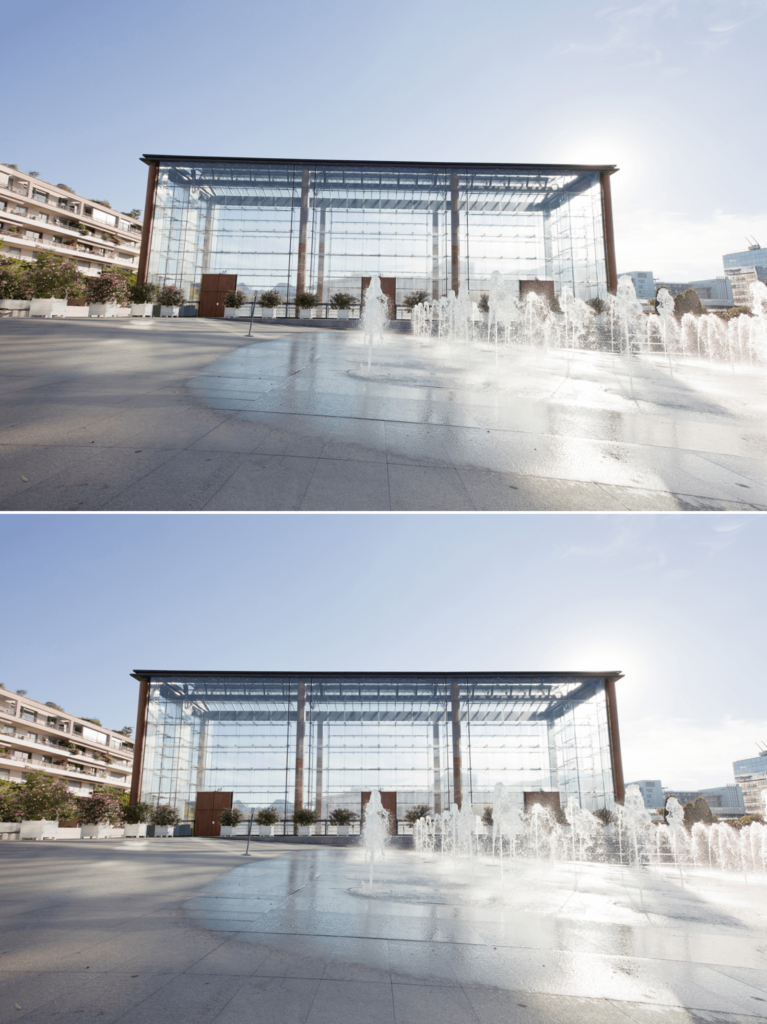
Automatically straightening horizons
To level the horizon automatically, go to the Horizon palette and click on the Auto button.
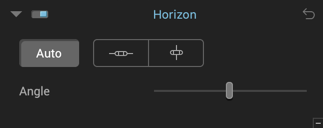
If you are not satisfied with the result, you can:
- Use the Angle slider to adjust the correction, either by moving the slider or by entering a value in the box that appears above the slider.
- Passer en redressement manuel.
Redresser l’horizon manuellement
Leveling the horizon by drawing a line
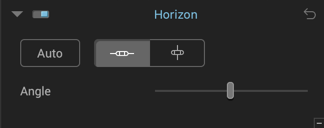
To adjust the horizon manually, you can use both horizontal and vertical references:
- To activate the tool, click on the Horizontal Level or Vertical Level button in the Horizon palette.
- A horizontal or vertical line with two circular anchor points will be superimposed on your image.
- Place the mouse pointer on one of the anchor points. Click on the anchor point to grab and move it to one of the ends of your reference element. Move the second anchor point to follow the line of your horizontal or vertical element.
- When you click on an anchor point, the magnifying Loupe displays so you can place the anchor point more precisely.
- Check your correction with automatic preview enabled or by clicking on the Preview button in the toolbar (the transparent dark areas indicate the portions of image that will be lost in cropping).
- To approve and apply the correction, click the Apply button on the lower toolbar.
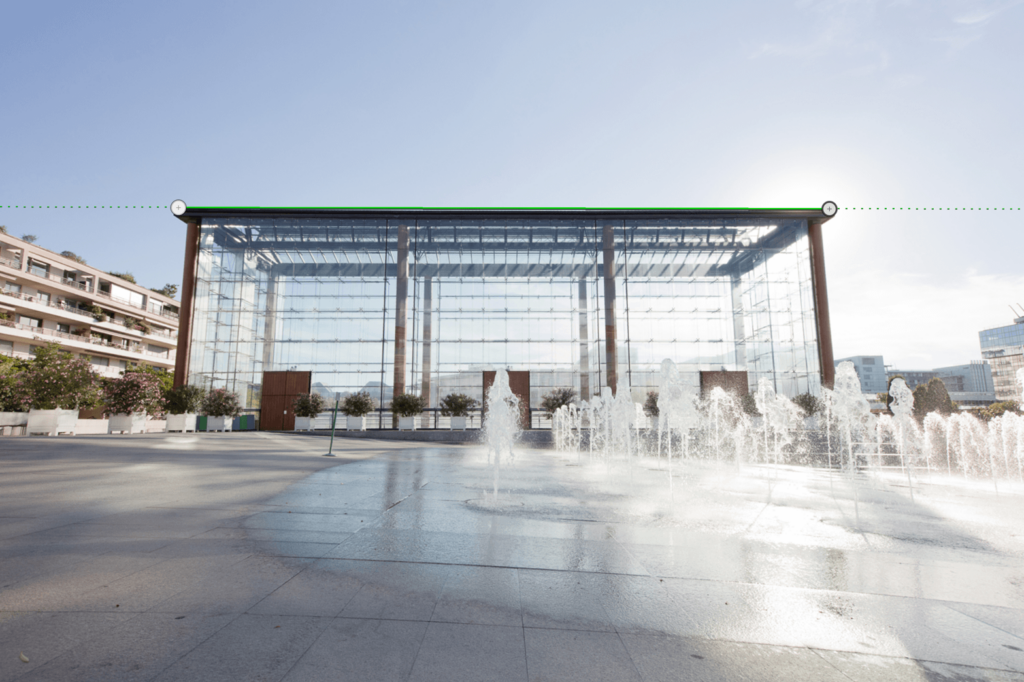
Using the angle Slider to level the Horizon
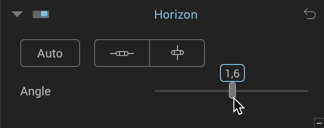
With the Angle slider, you can adjust the rotation of the image in two ways:
- By moving the slider left or right to tilt the image one way or the other.
- By entering a number into the field above the slider handle. Add a – (minus) sign to tilt left.
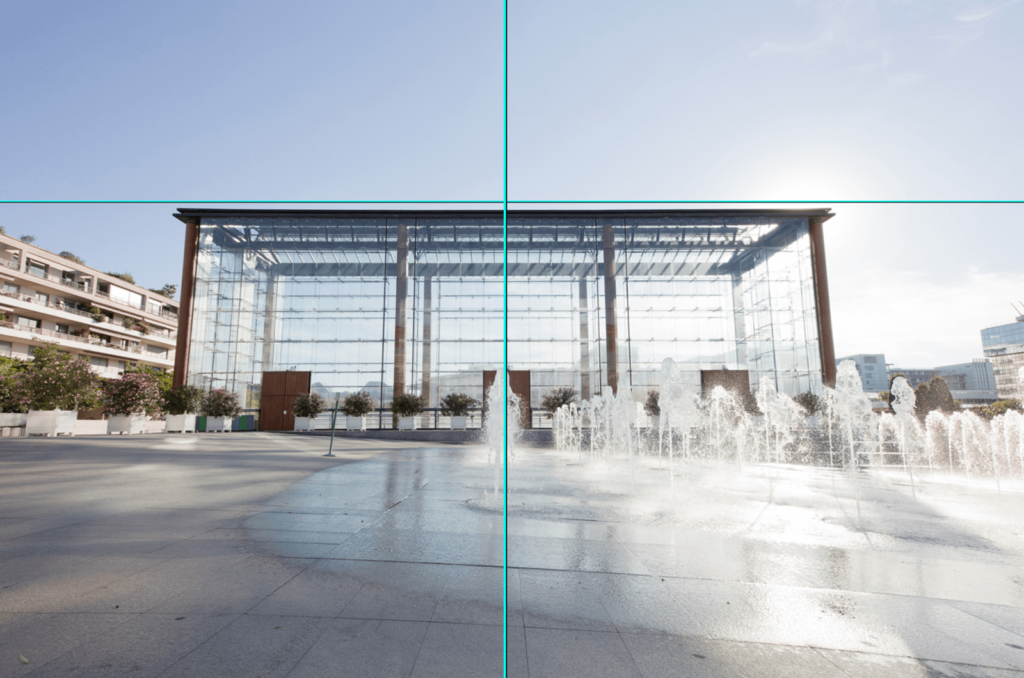
Recadrer une image
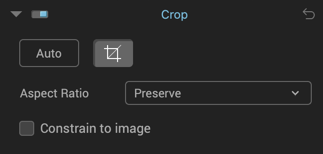
About Cropping
The corrections done using the Distortion, Volume deformation, Perspective, and Horizon tools include an automatic crop feature that maximizes the visible field of the image.
Using the ReShape tool can lead to needing to crop the image. Whatever the cropping mode, automatic or manual, Nik Perspective automatically detects the orientation of the cropping area.
The crop grid is divided into thirds and, if your crop makes it smaller than the image, you can move it around using the mouse. To ensure it cannot be made any bigger than the image, check the Constrain to image box.
Cropping tool lower toolbar

- Show grid checkbox: enables or disables the 3 x 3 cropping grid.
- Mask Opacity: This slider controls the brightness of the areas of the image that will be removed after cropping.
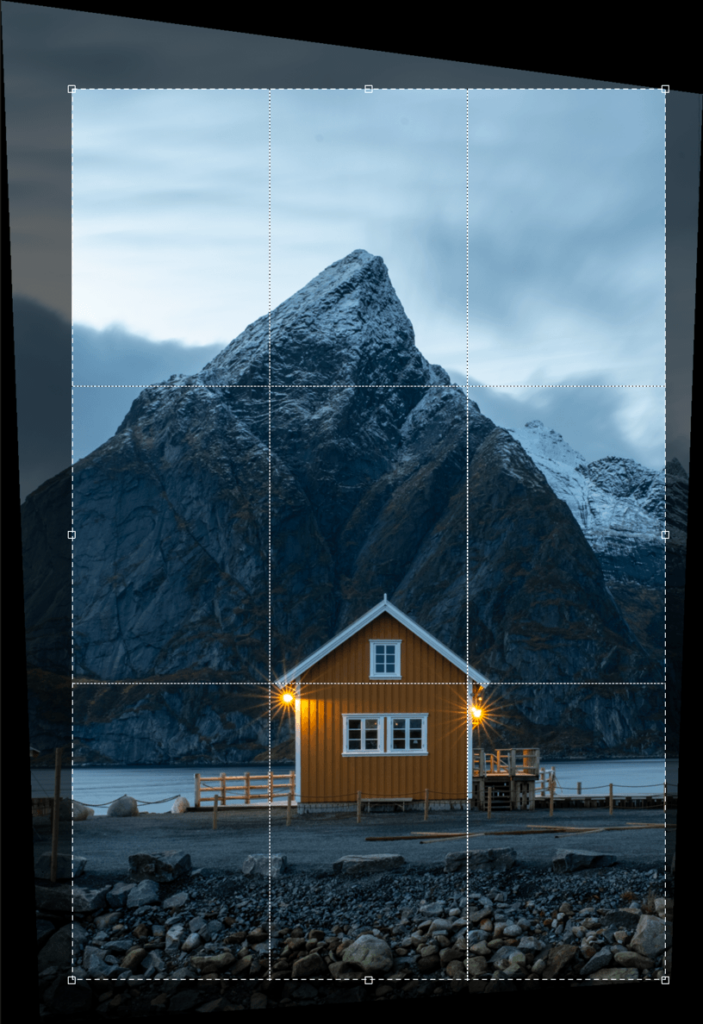
Recadrer automatiquement une image
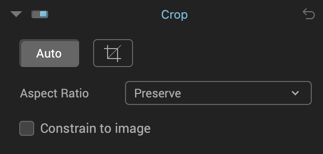
After adjusting the perspective or horizon of your image in Nik Perspective, go to the Crop palette and click the Crop button. An adjustable grid will be superimposed on your image.
- Cliquez sur le bouton Auto. In this mode Nik Perspective calculates the area to retain and displays dark areas that indicate the zones that will be lost, compared to the original image.
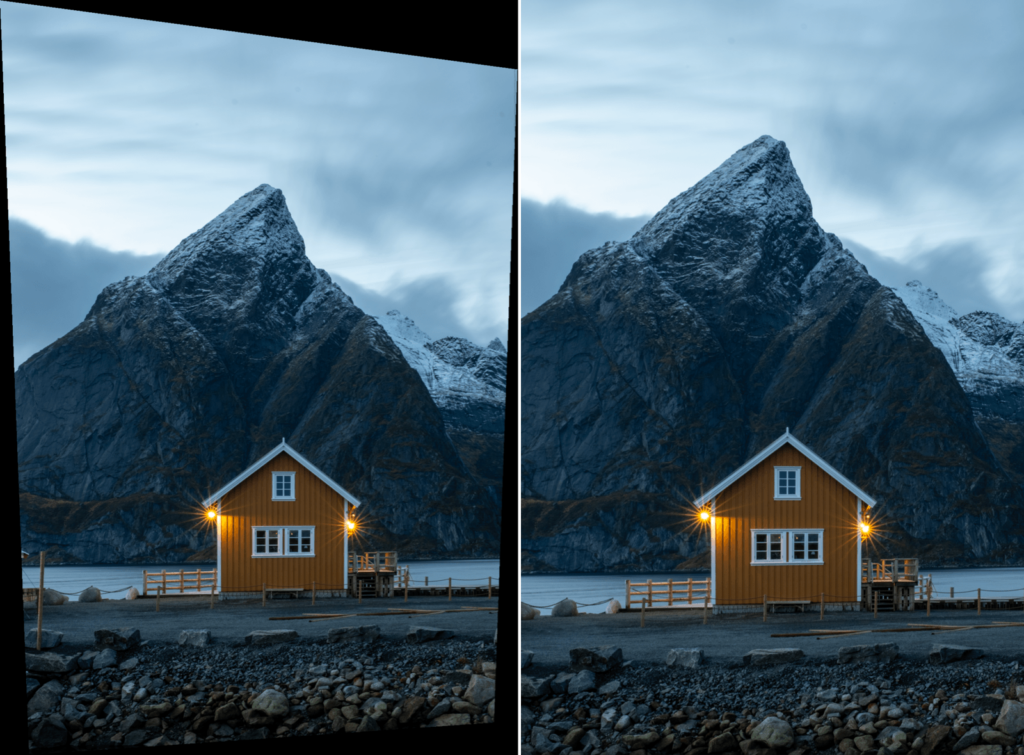
- Plusieurs formats vous sont proposés dans le menu déroulant Ratio de l’image : 16/9 (format TV), 5/4, 5/2, 2/1, 3/2 (format des réflex APS-C et plein format), le 4/3 (format des compacts) et 1/1 (format carré) :
- By clicking on Preserve in the Aspect Ratio drop-down menu, you will preserve the proportions of the original image.
- En cliquant sur Libre, vous appliquez une correction manuelle.
- By selecting Add Custom, you can enter the pixel values (for height and width) of your choice and define the proportions of the custom crop.
- Select the format you would like: the grid superimposed on your image will be automatically modified. By clicking on the grid, you can change the position of the frame and adapt it to the composition of your image.
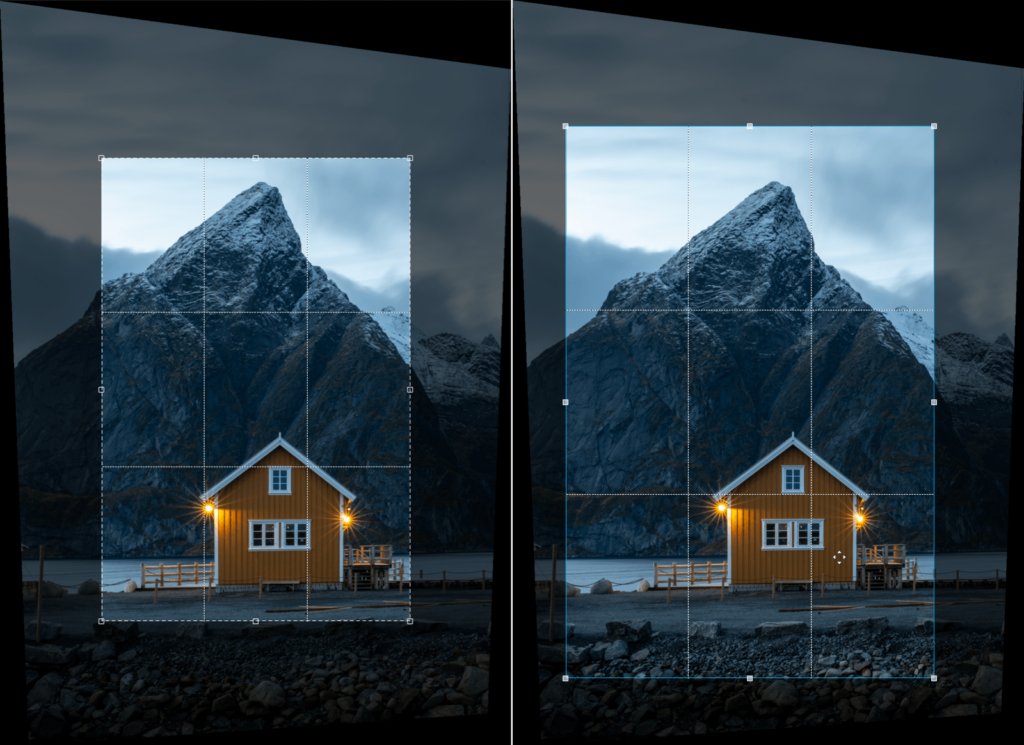
- By checking the Constrain to image box, the frame is automatically confined to the part of the image being worked on, so as to avoid having any dark zones superimposed on the perspective corrections.
- To apply the crop, click on the Apply button in the lower toolbar.
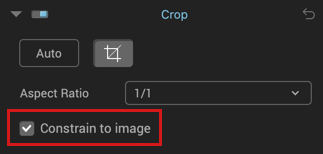
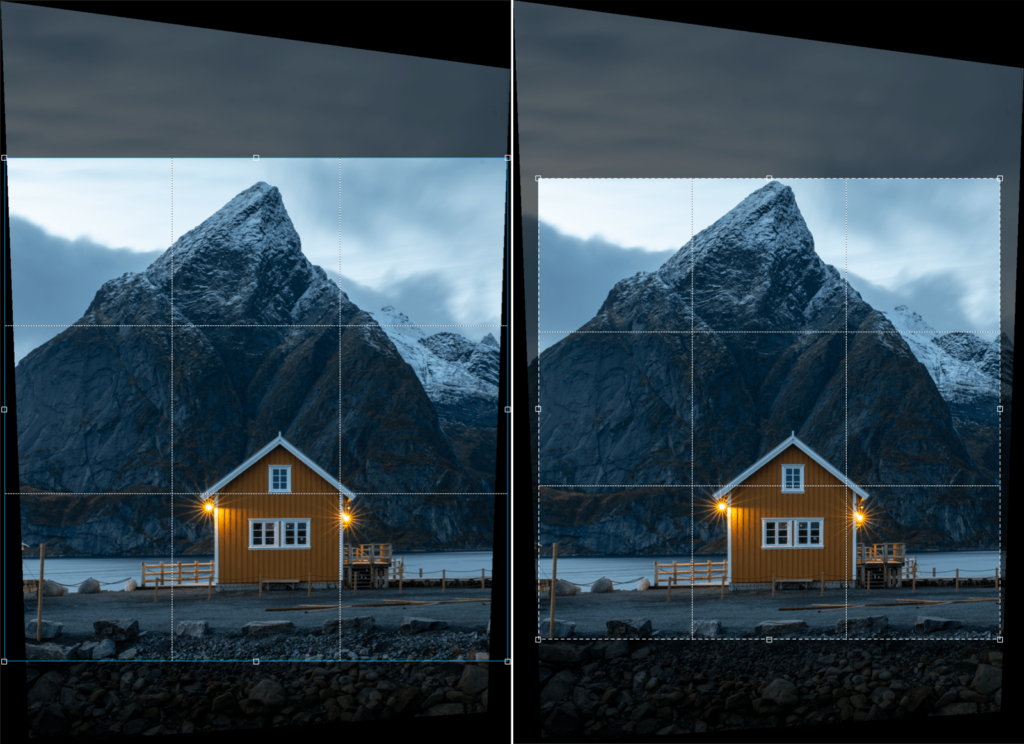
Recadrer manuellement une image
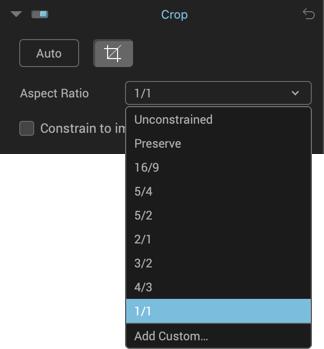
Click on the Crop button in the Crop palette. The adjustable grid will be superimposed on your image. To adjust the aspect ratio of the final image to your exact needs, select Unconstrained mode from the drop-down menu.
Adjust the dimensions of the crop by grabbing the resizing handles found in the corners and on the sides of the grid. You can also alter the overall framing to change the composition of your image by grabbing the center of the grid and dragging it to a new position.
You can use the arrow keys on your keyboard to adjust the position of the crop zone.
Leveling the Horizon with the Crop Tool
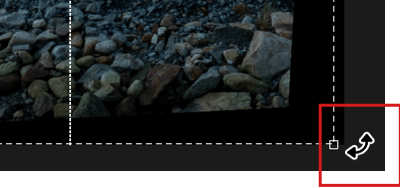
Although the Horizon tool lets you straighten your images, you can also do this using the crop grid:
- After activating the Crop tool, place the mouse on one of the four corners of the grid.
- The pointer takes the form of a curved arrow to let you tilt the image left or right with the mouse. The grid will not actually move as it is the image that rotates when the mouse button is released.
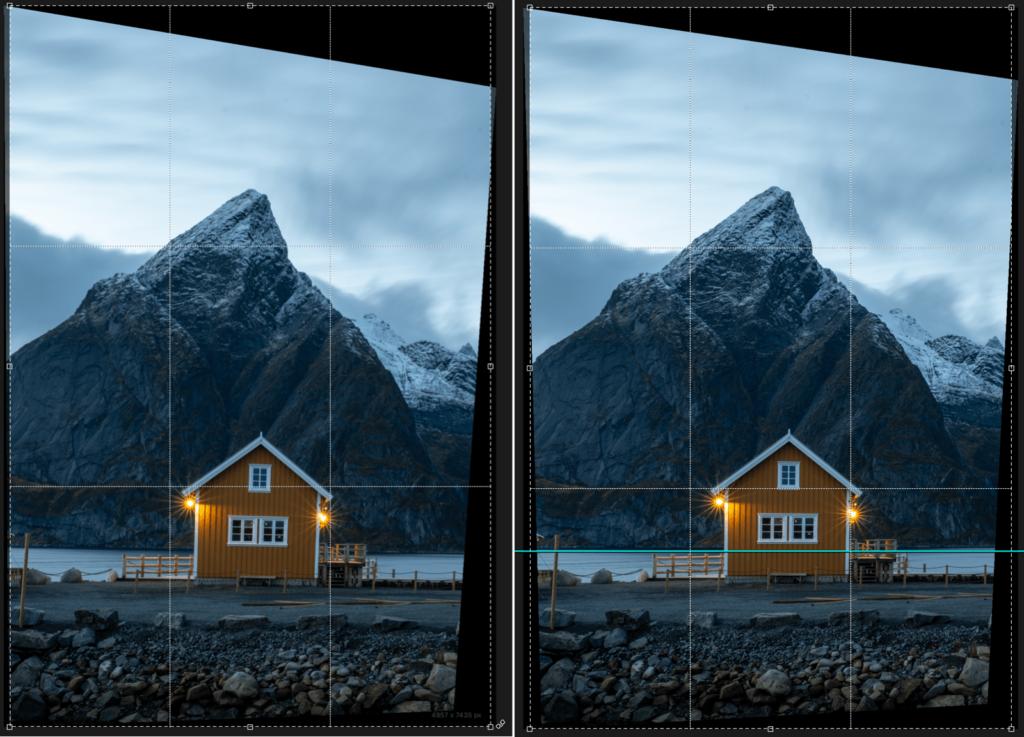
Miniature Effect
About the miniature effect
The miniature effect simulates tilting a swing-shift lens to move the image’s focal plane and give the image the appearance of a model, diorama or landscape photograph. This effect is particularly dramatic on images of urban landscapes shot form above.
The Nik Perspective Miniature Effect tool offers a very flexible way to position blurred areas, and vary their intensity.
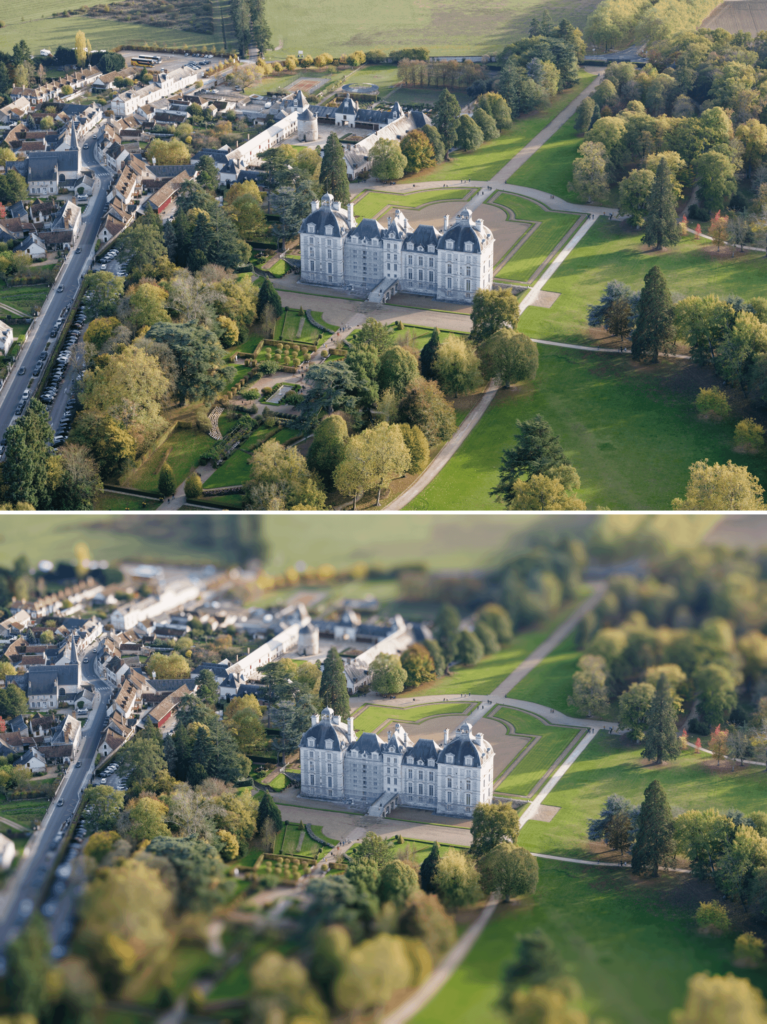
Appliquer un effet miniature
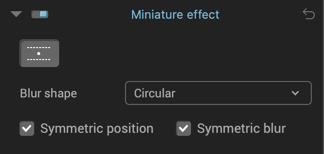

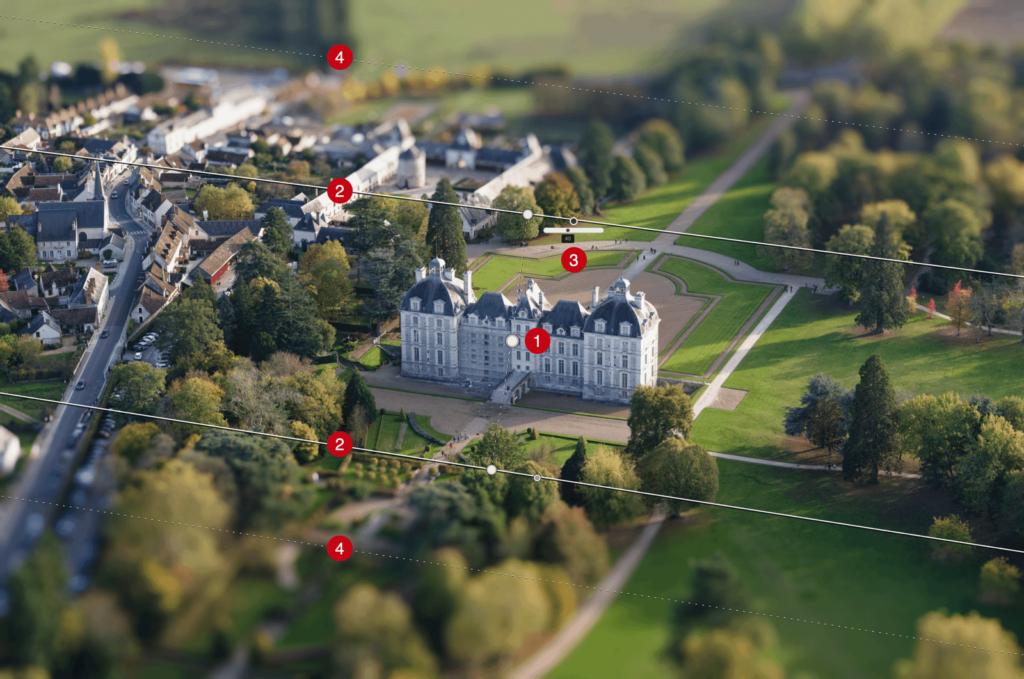
To create a miniature effect:
- Click the button to activate the tool in the Miniature Effect palette.
- Select a shape from the Blur shape menu (circular is the default).
- A number of lines and tools will appear on the image and a default blur effect will be applied to the top and bottom of the image.
The Miniature Effect tool features the following elements:
- The central anchor point, in the middle of the image by default, can be dragged to anywhere in the photo (it is activated while dragging).
- The two continuous lines on either side of the central anchor point indicate the edges of the sharp zone. They can be moved apart or brought closer together with the mouse, either by grabbing one of the two lines (moves in both directions), or by grabbing the anchor point (moves in all directions and rotates).
- The small disk to the right of each reference line reveals a slider to adjust the blur effect on roll-over. Drag the slider with the mouse to choose a value between 0 and 100 (the default is 40).
- The two dashed lines indicate the limits of the blur transition zones that originate at the solid lines (maximum blur is applied beyond the dashed lines). To adjust the size of the transition area, simply move one of the dashed lines towards the central point (decreases the transition area) or away from it (increases the transition area).
- The positioning of the lines and the blur is symmetrical by default. If you want different sized transition zones or different blur effects on either side of the center point, go to the Miniature Effect palette and uncheck Symmetrical Position and/or Symmetric Blur. This will let you move the lines independently as well as set two different blur intensity values.
- When you are finished defining the miniature effect, click on Apply in the lower toolbar (or click Reset to cancel the effect).
To see the miniature effect without being distracted by the lines, move the mouse away from the image.
The Blur Shape menu lets you choose from different blur effects: standard, sharp, soft circular blurring or a simulated 6, 8 or 9 bladed aperture (the more blades there are, the smoother the transition will be).
